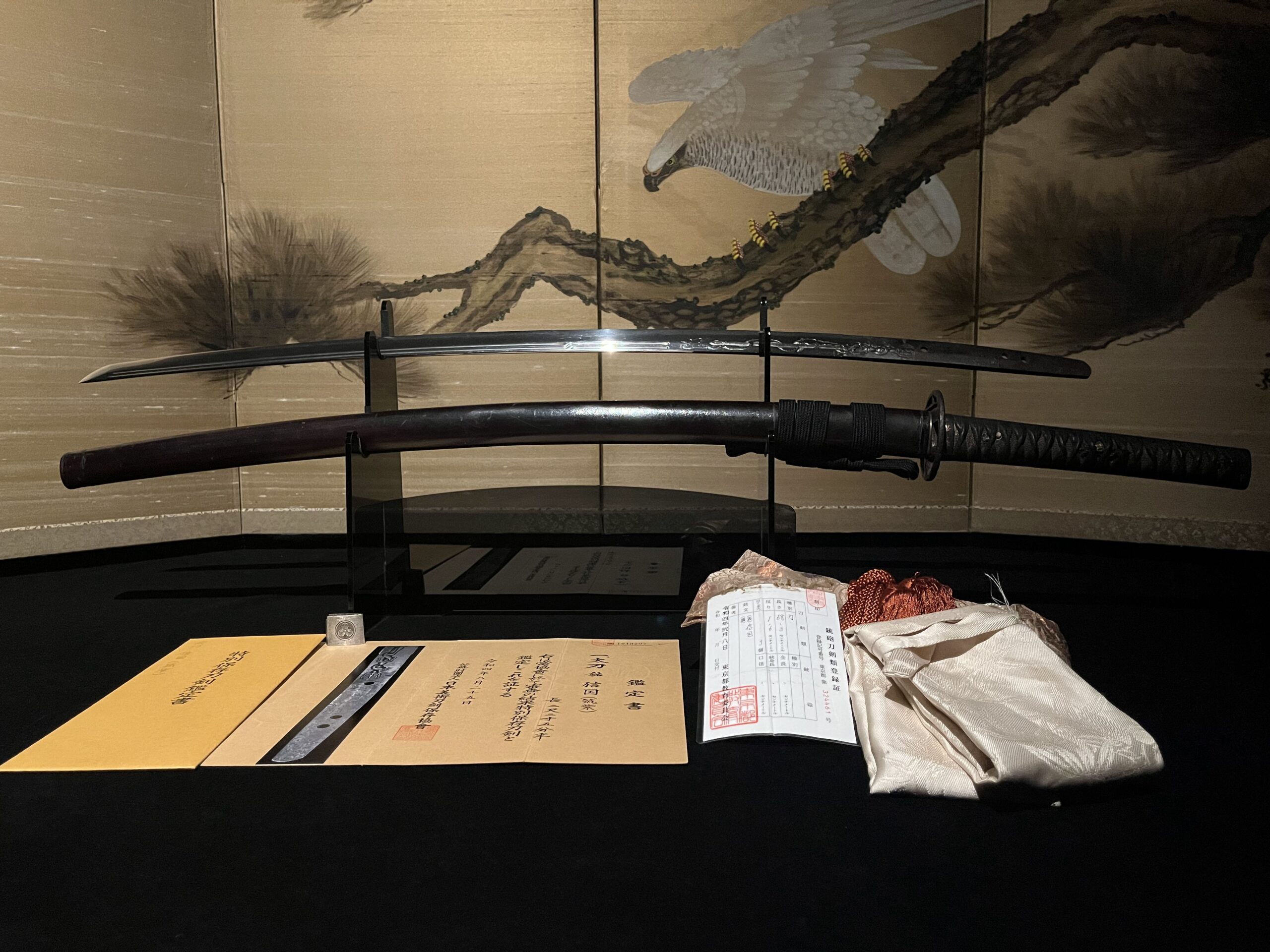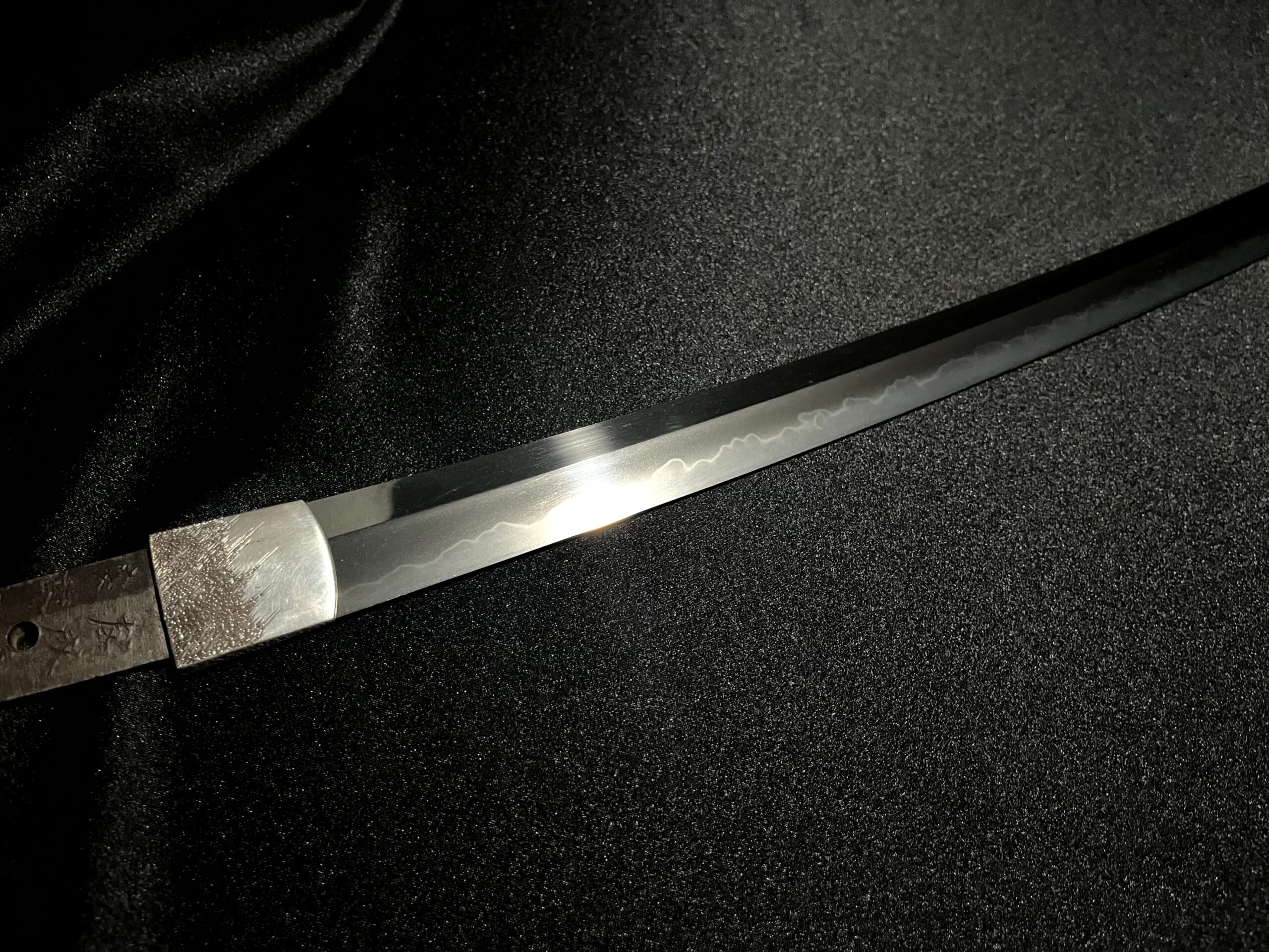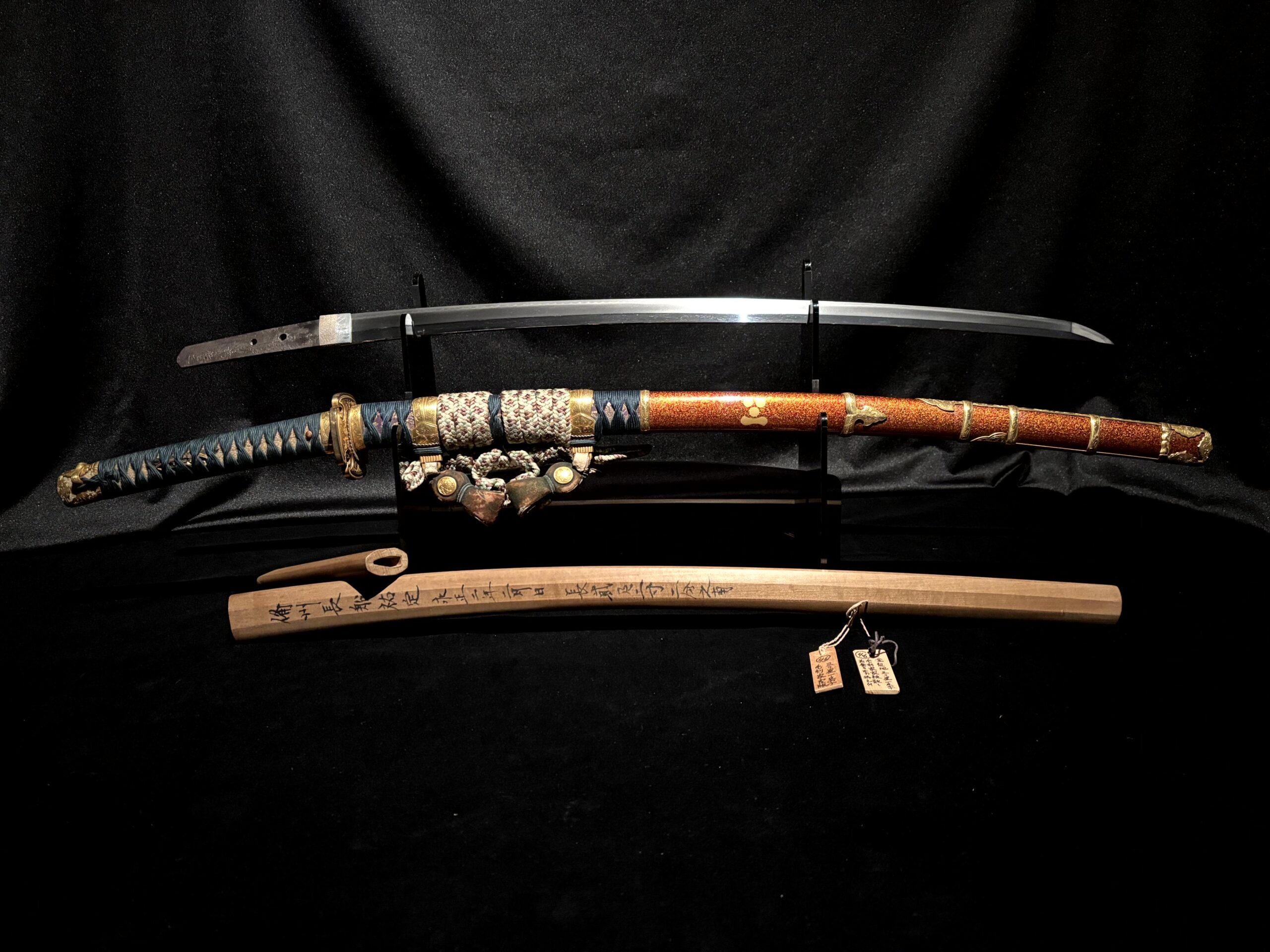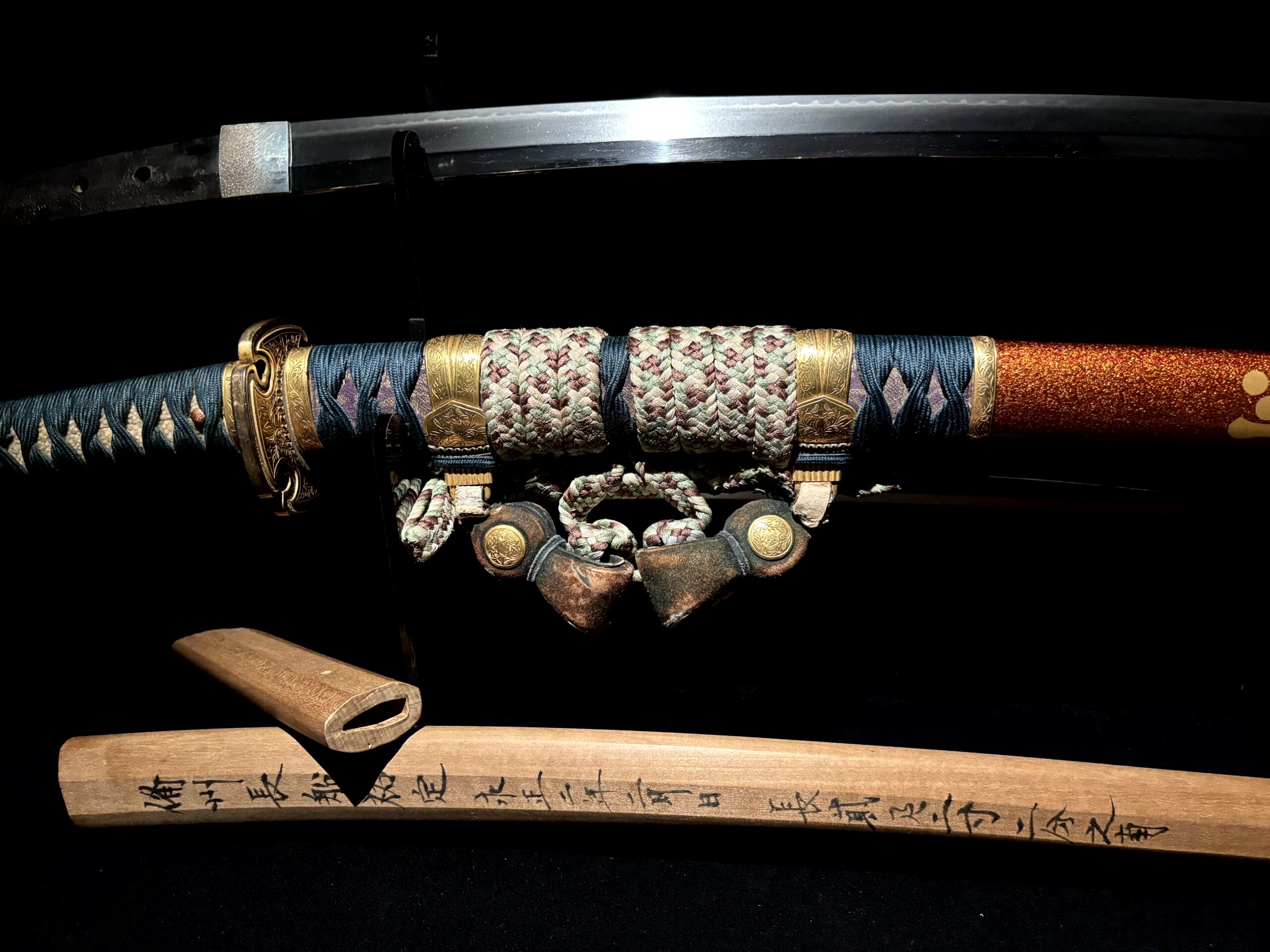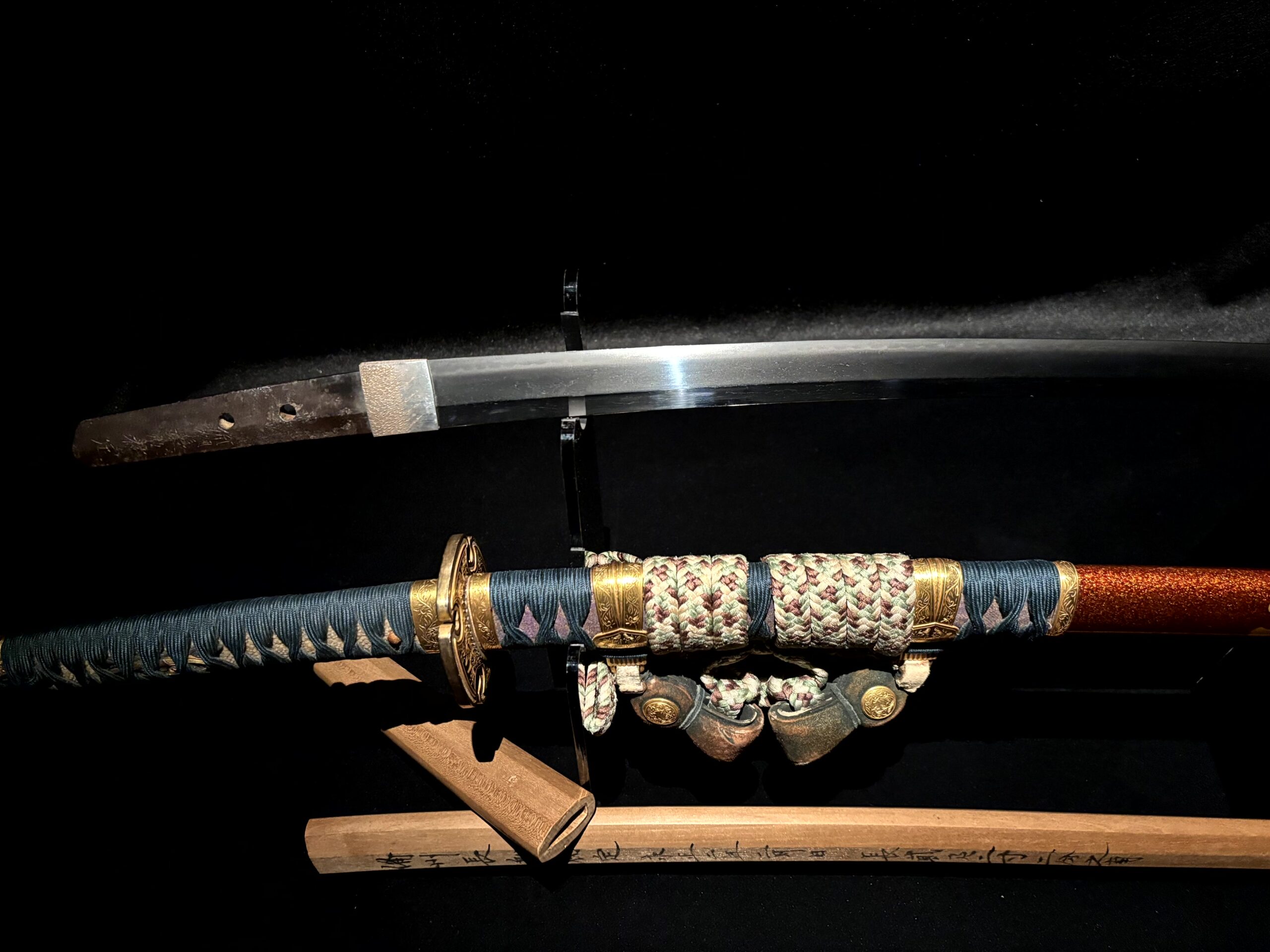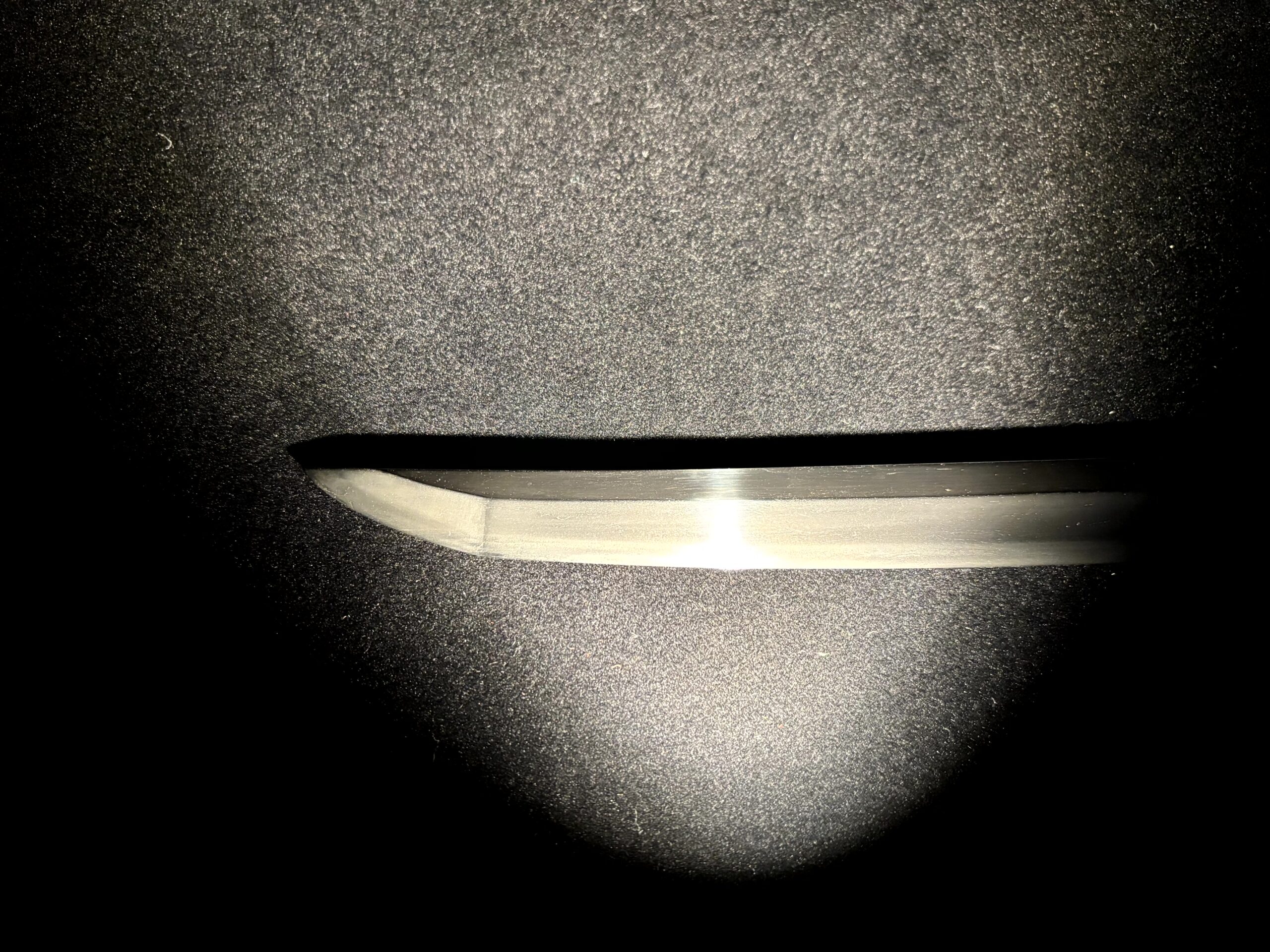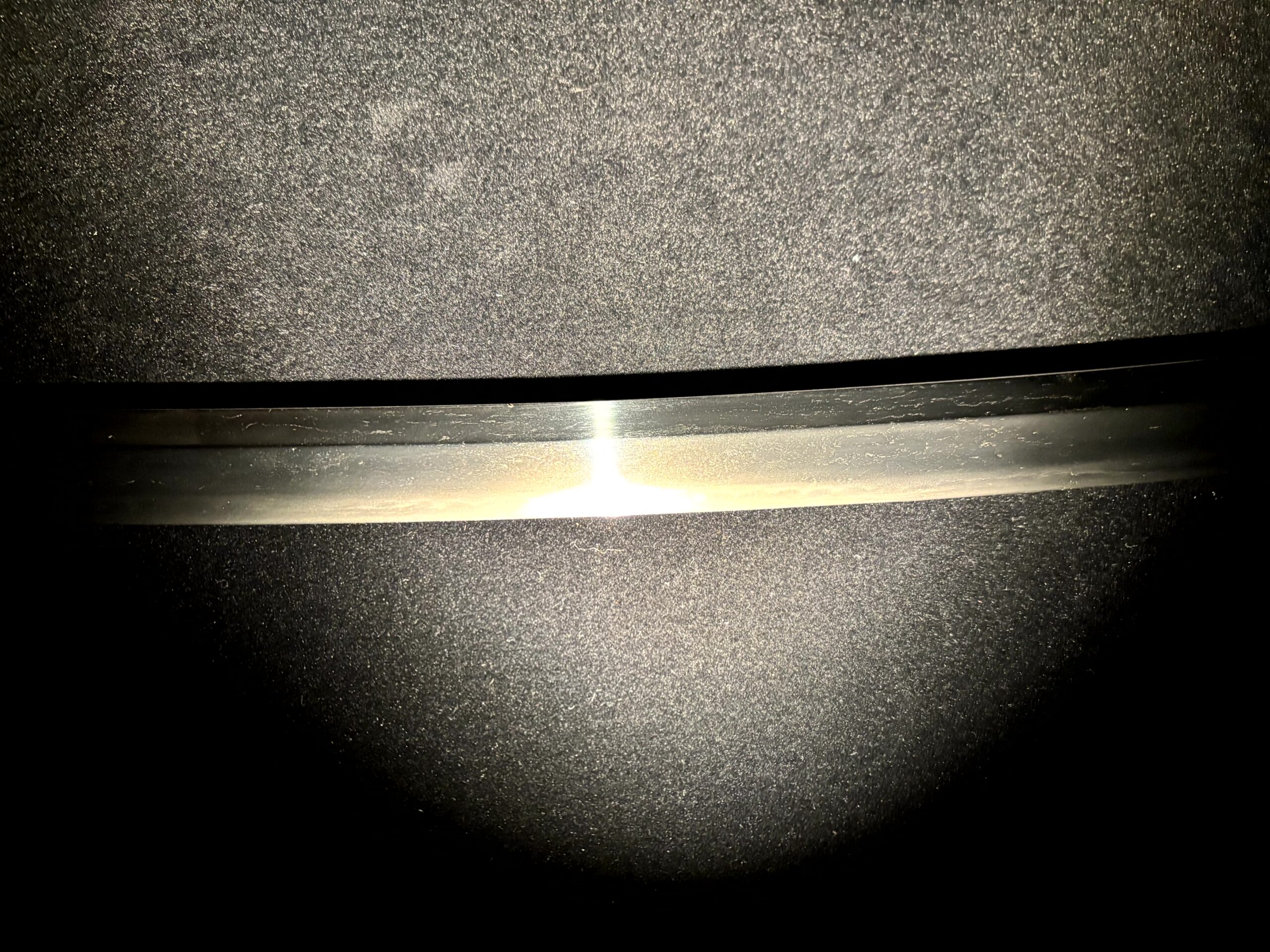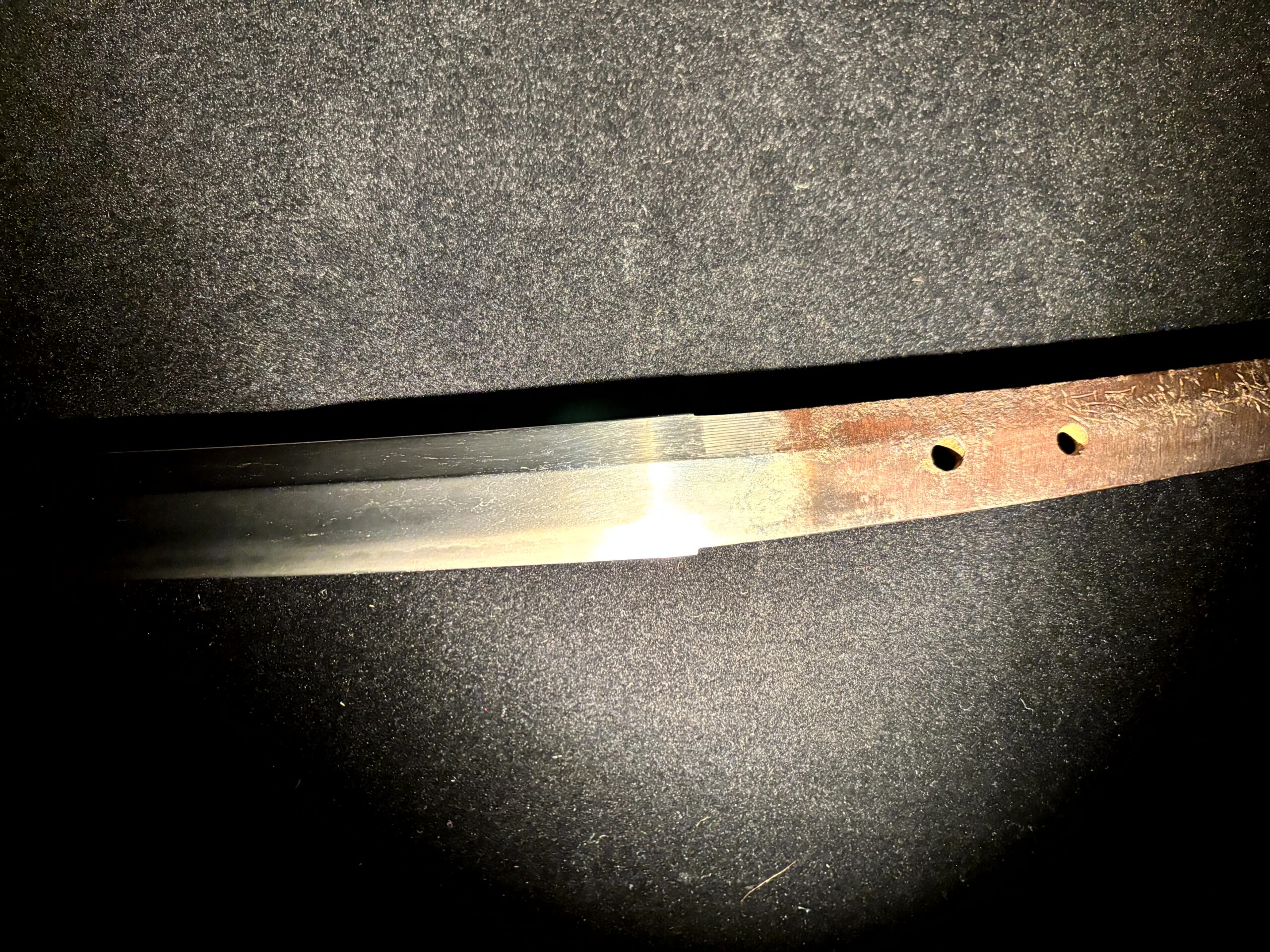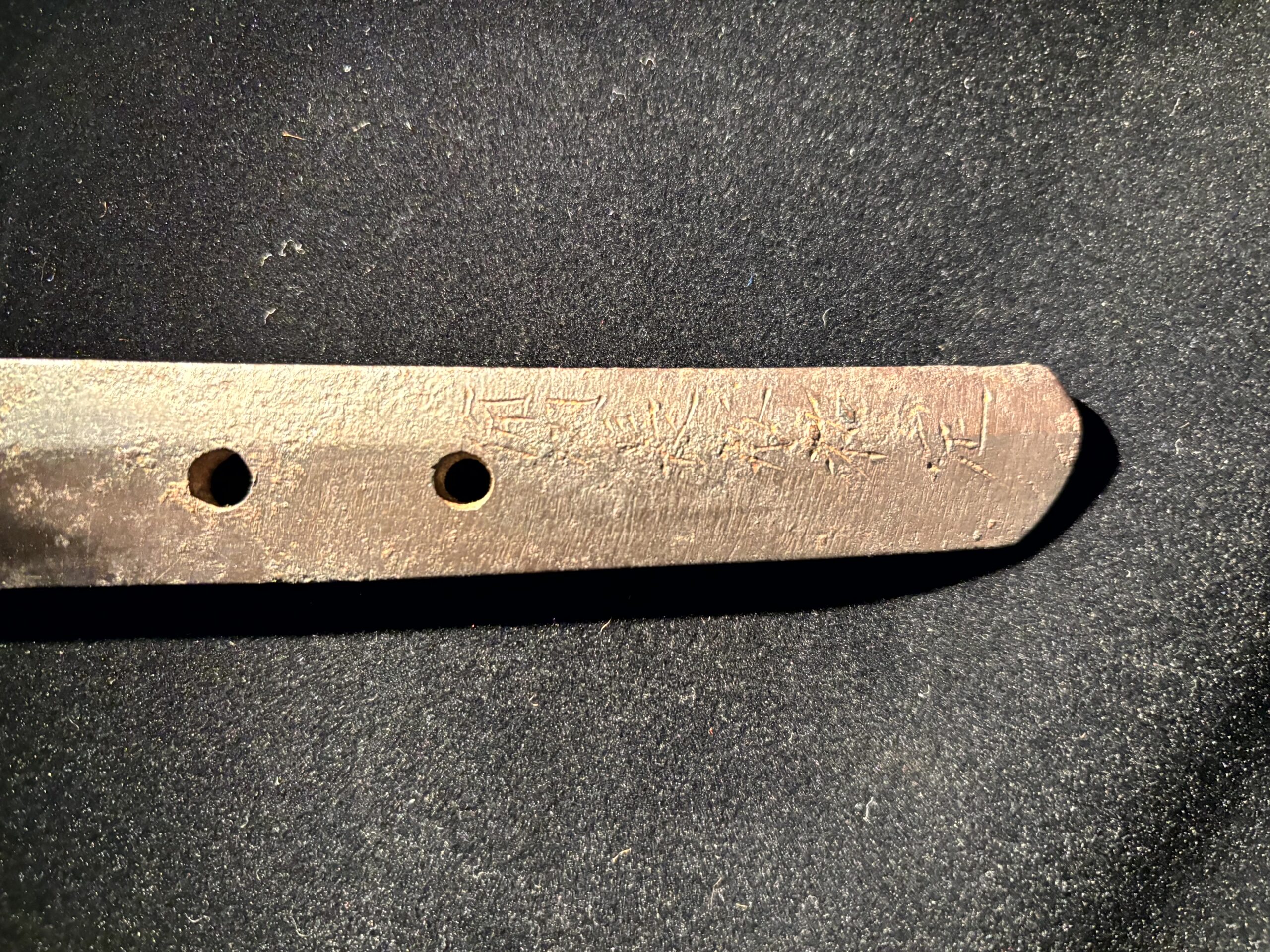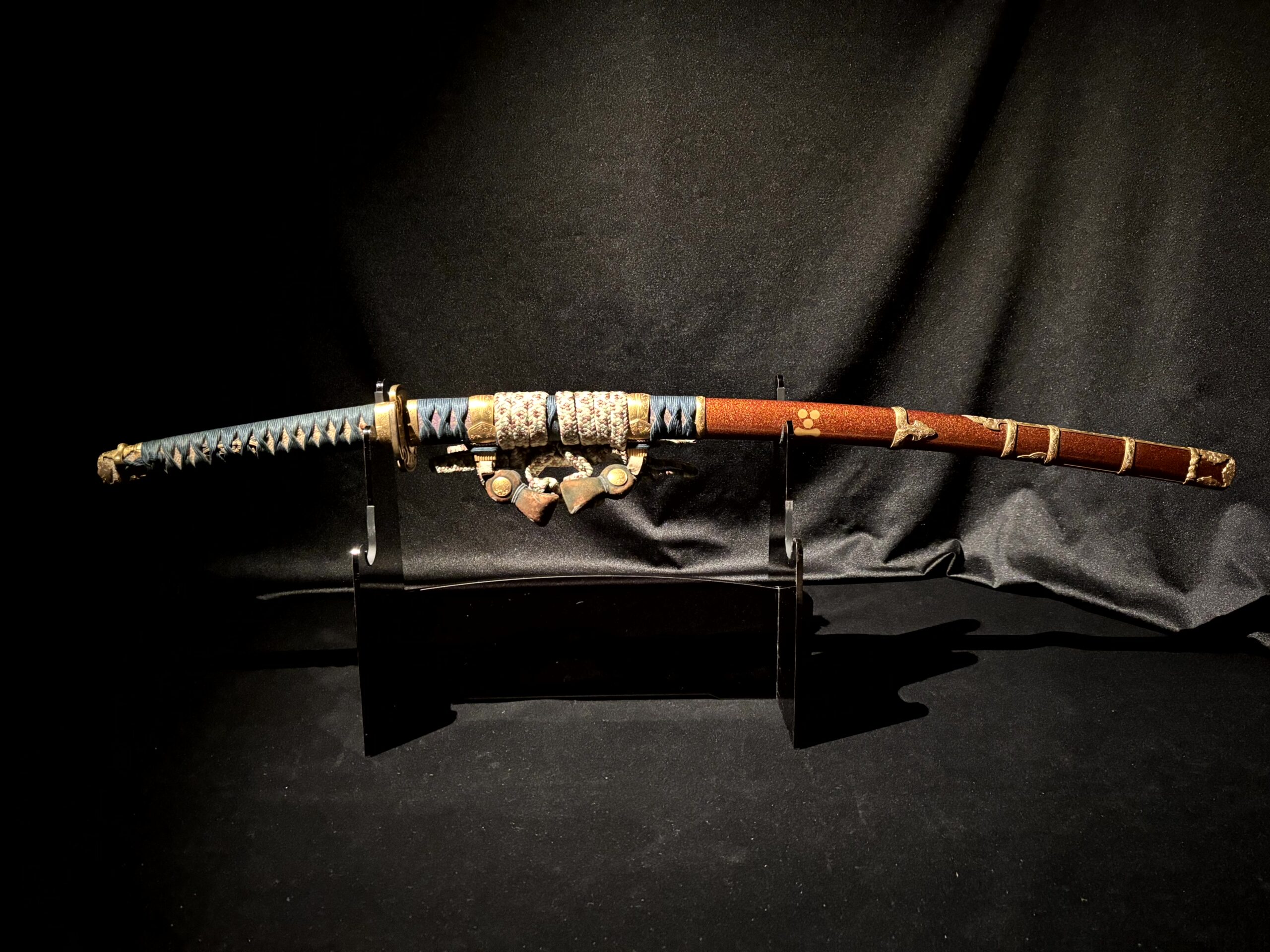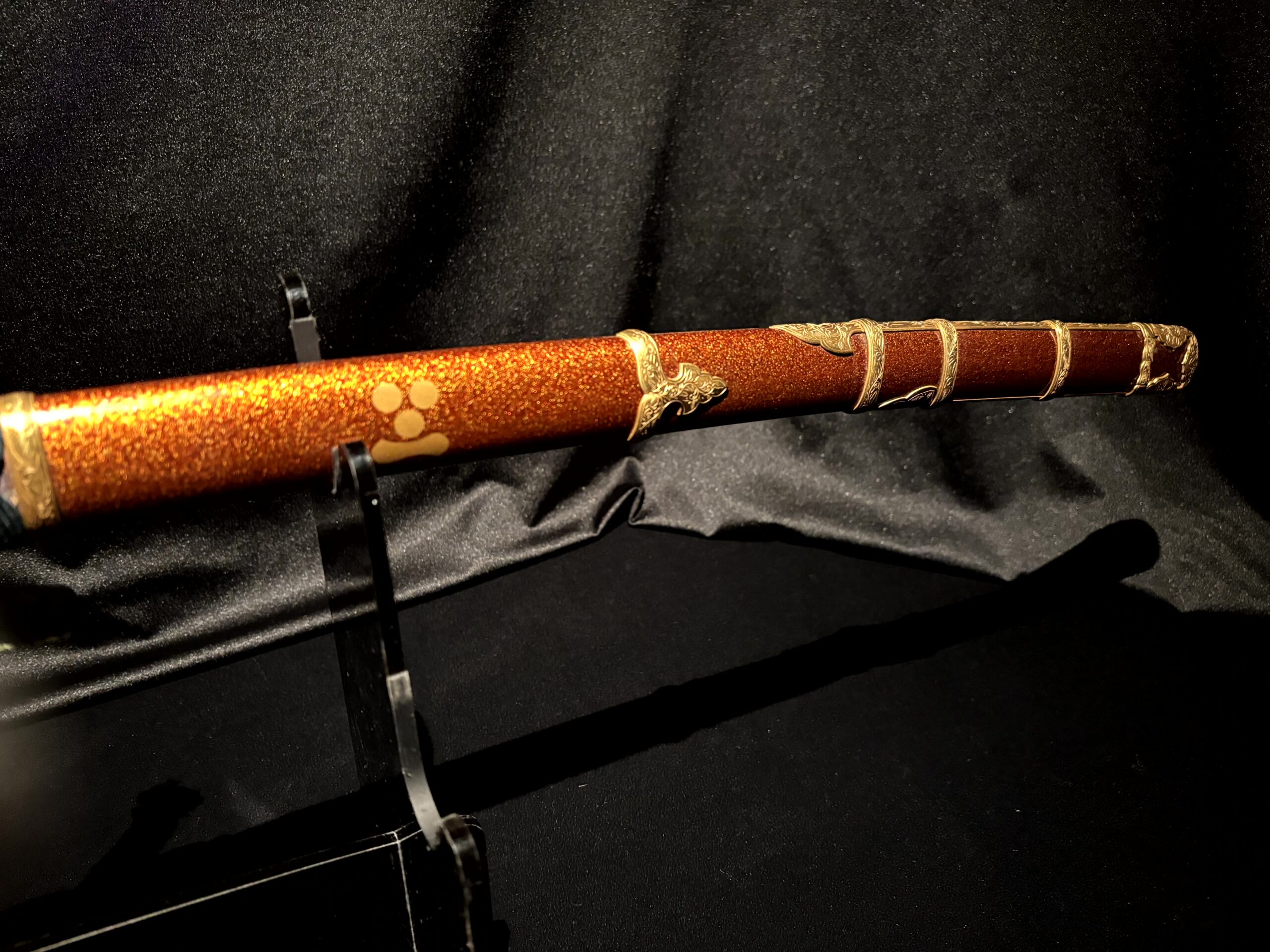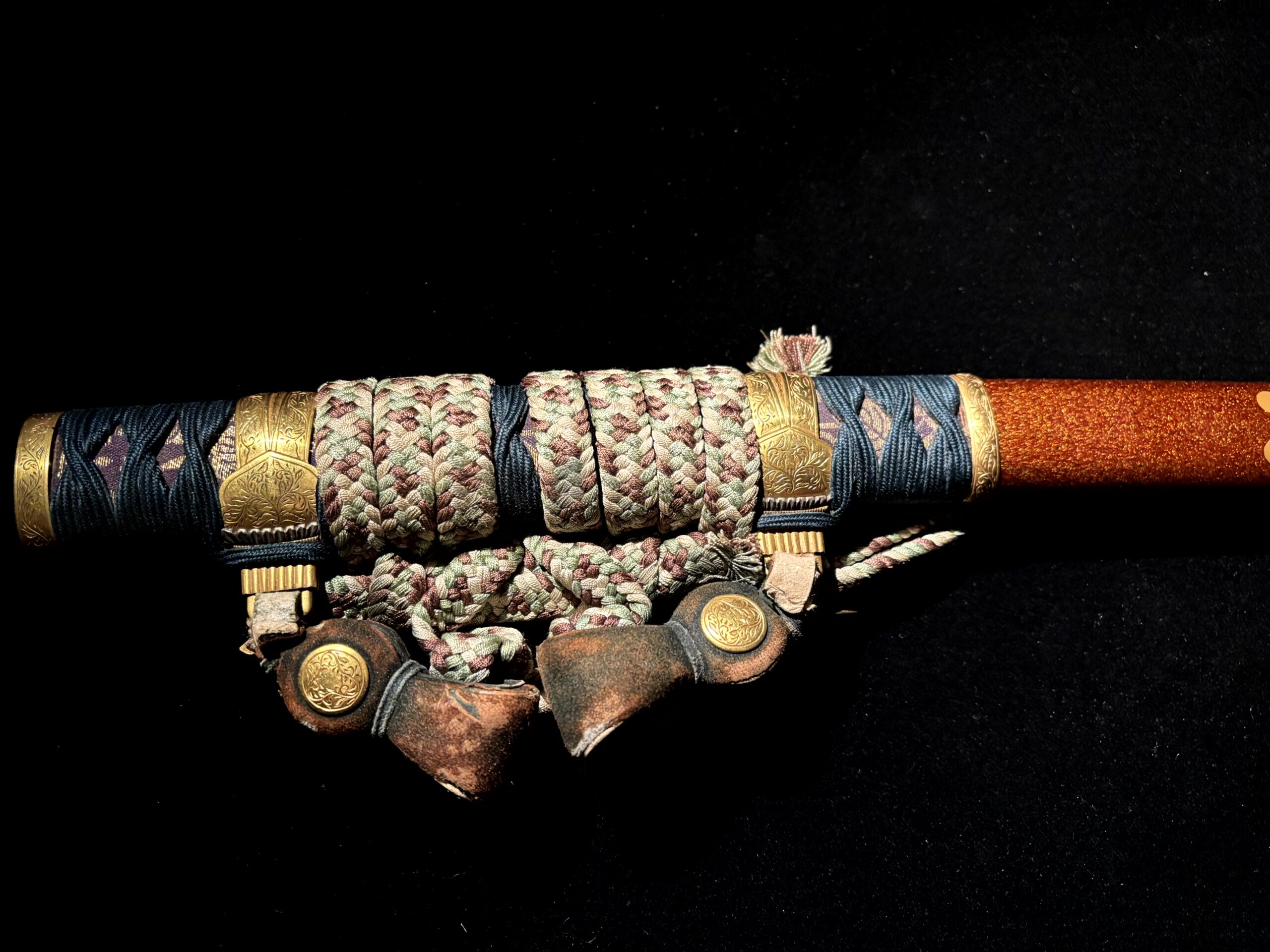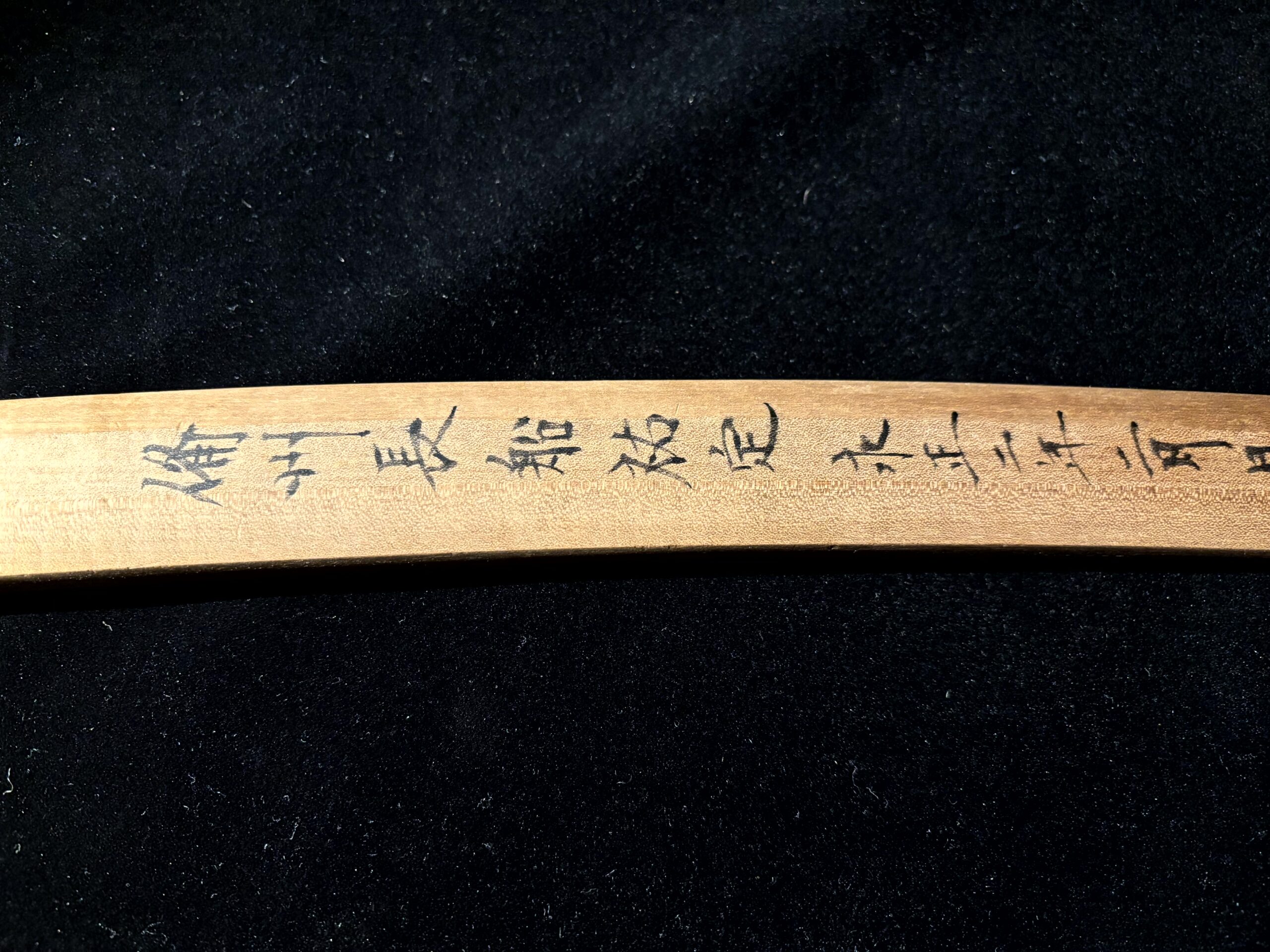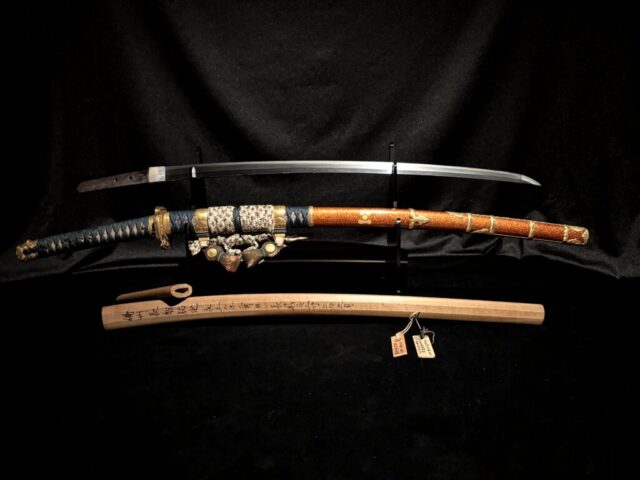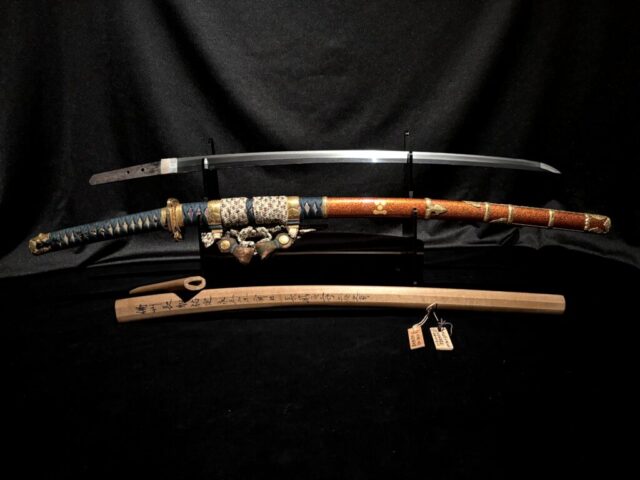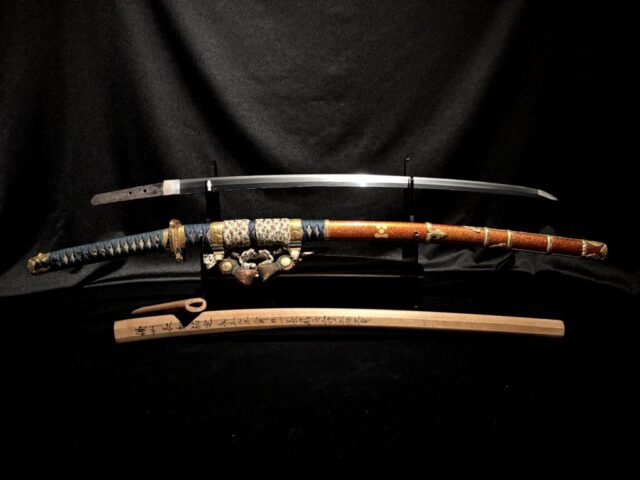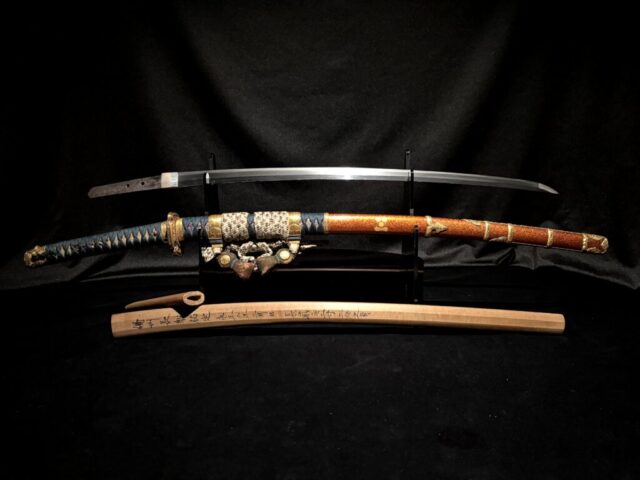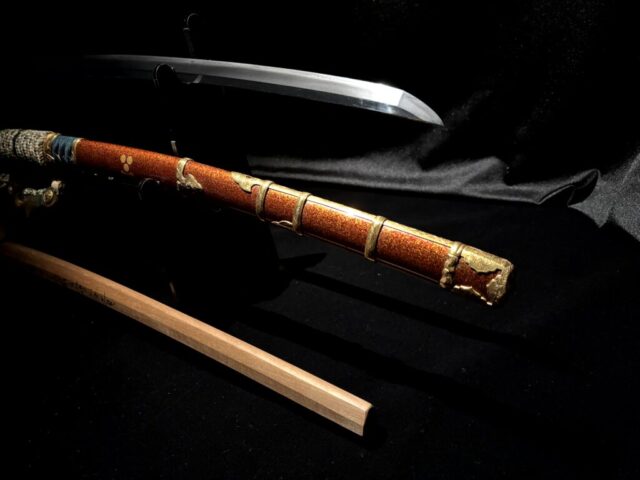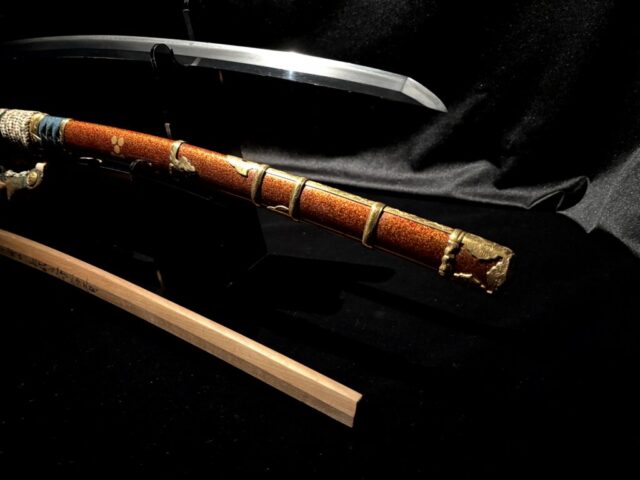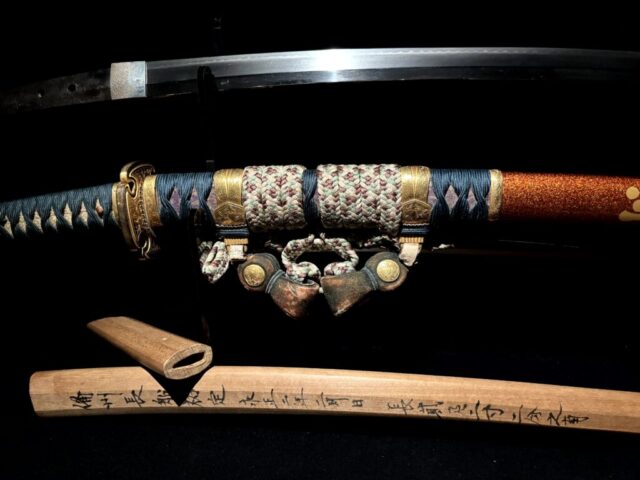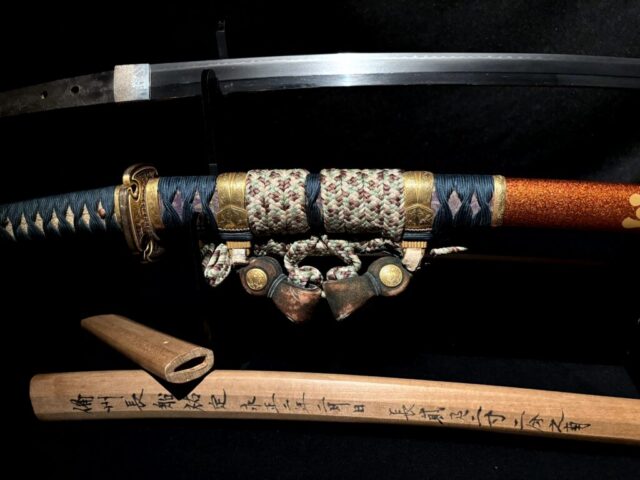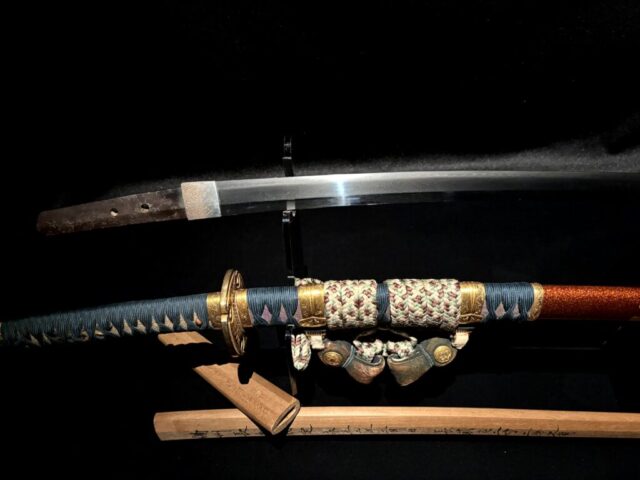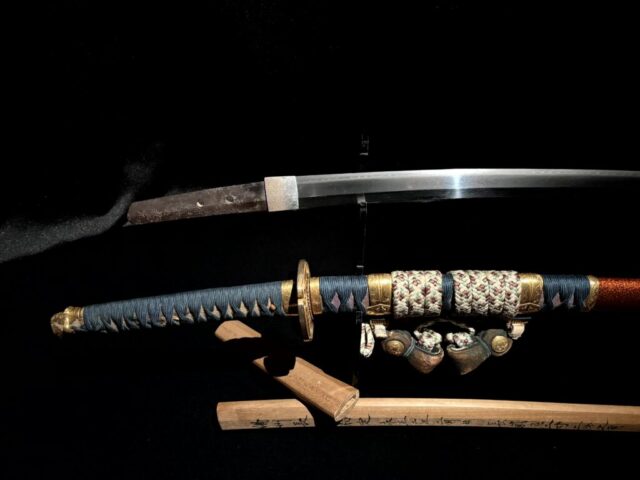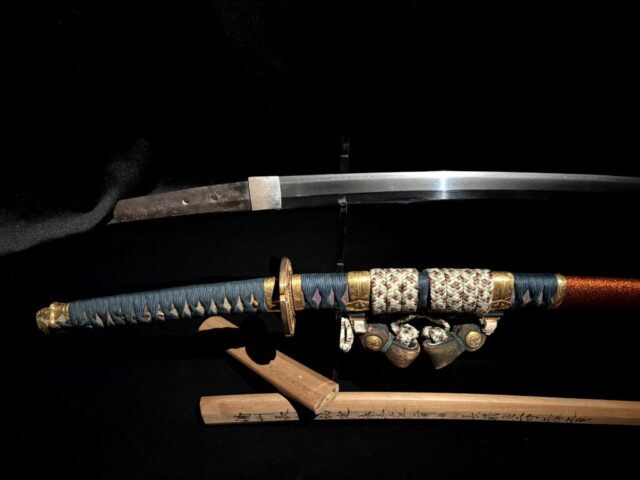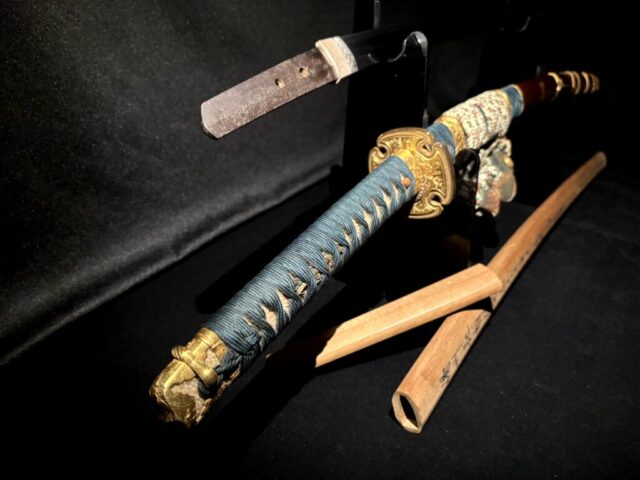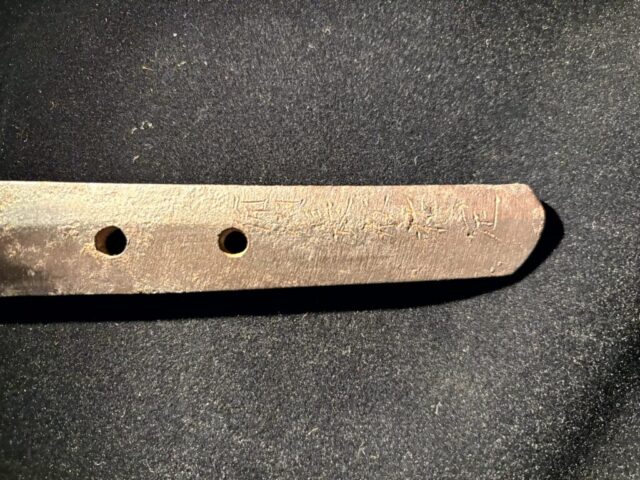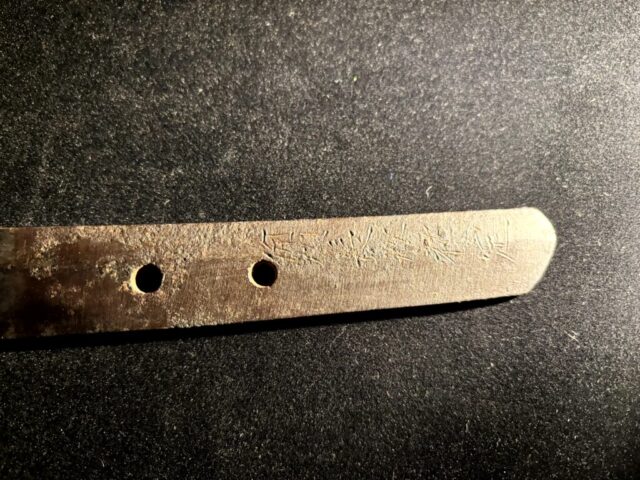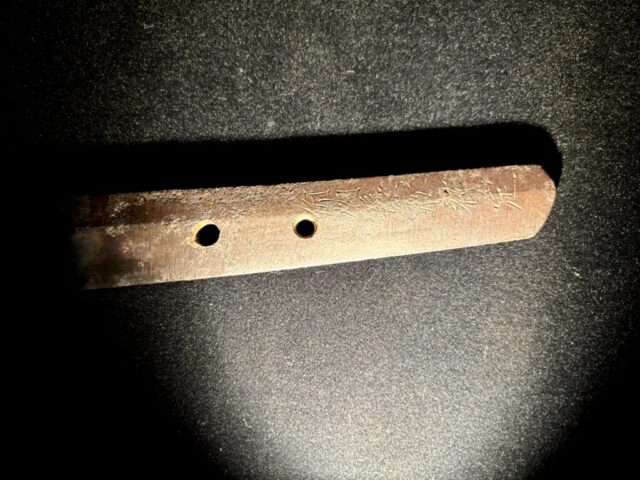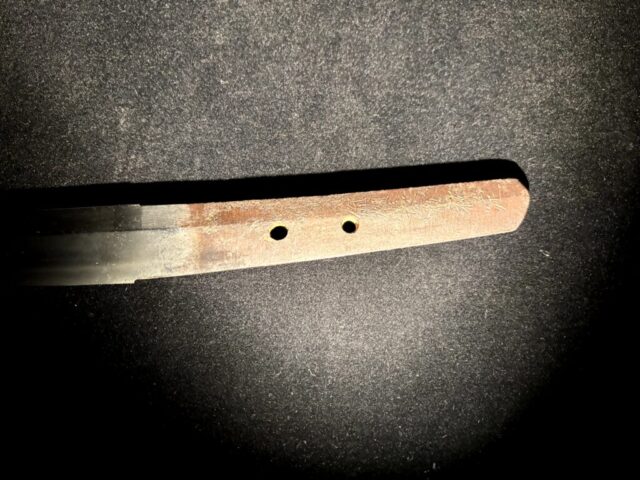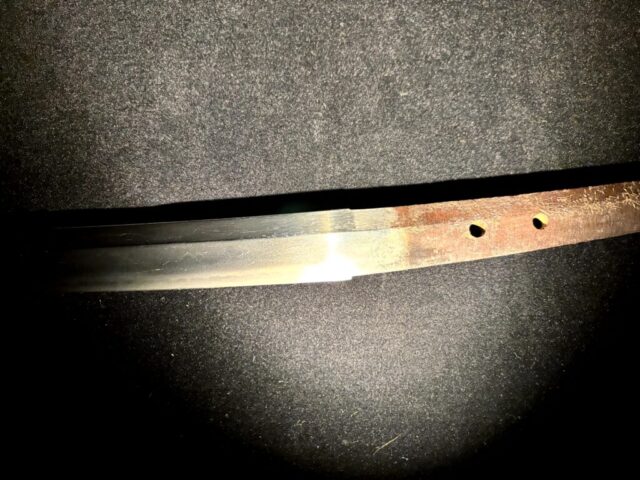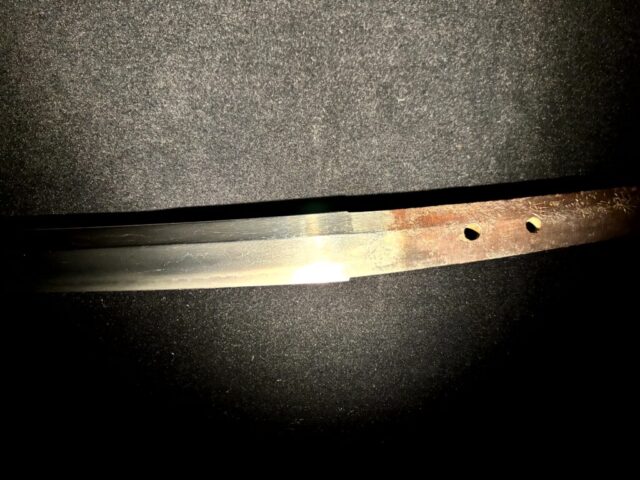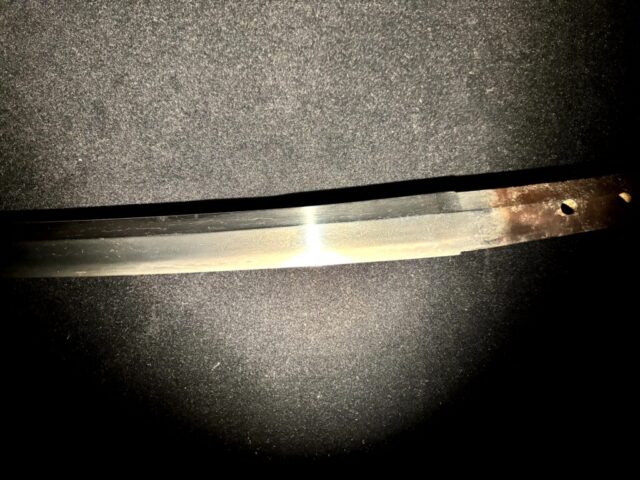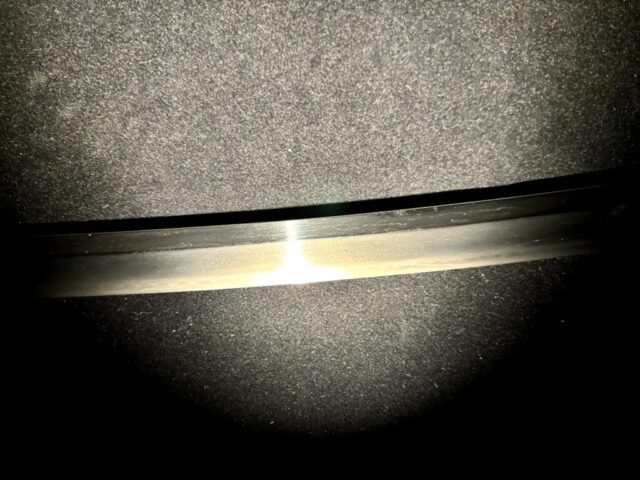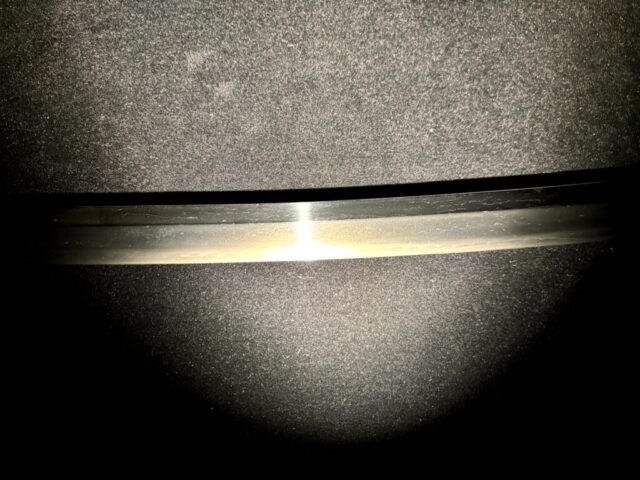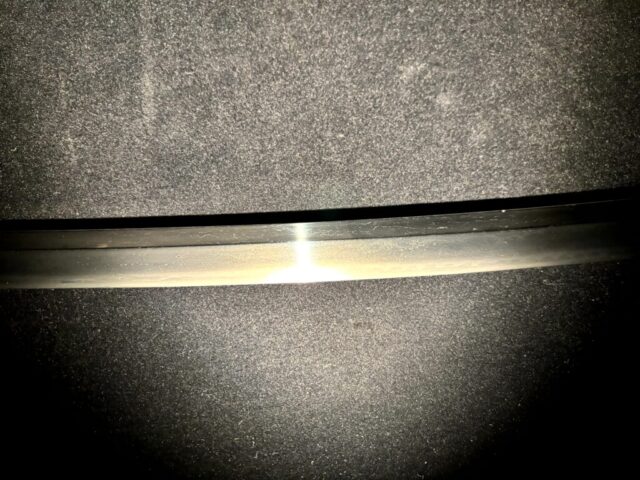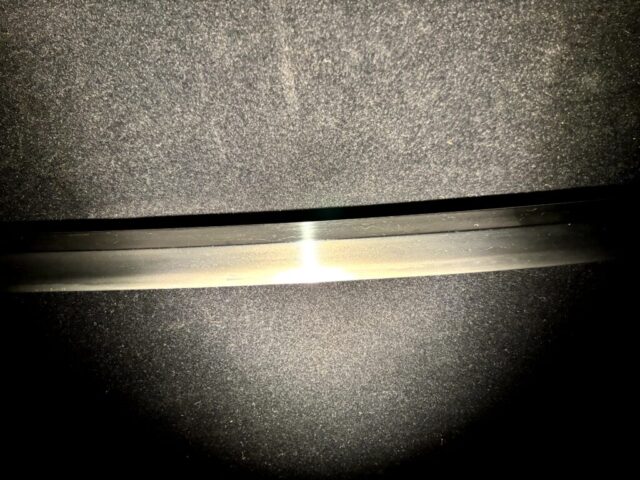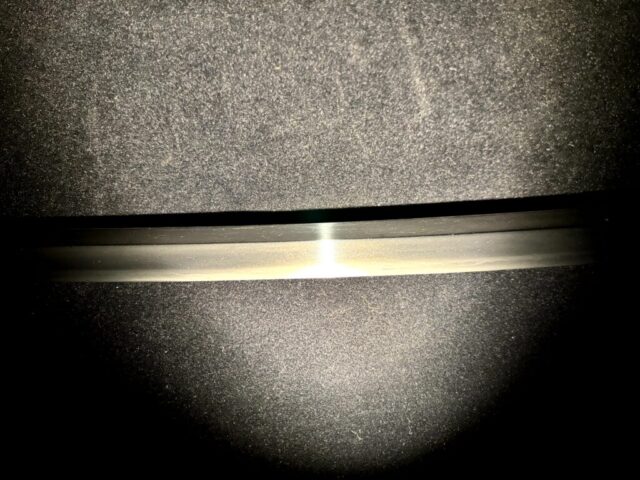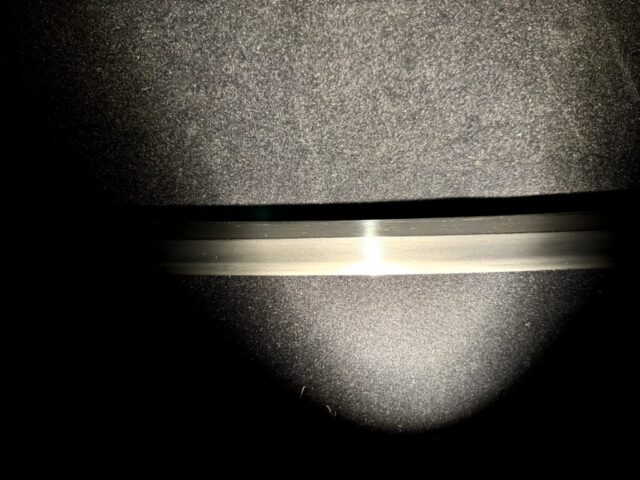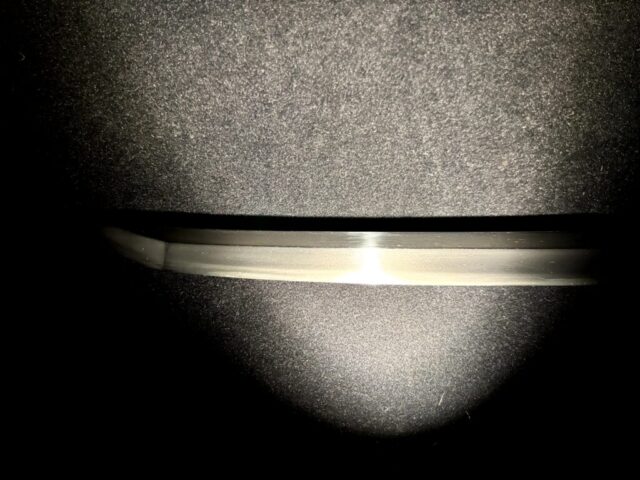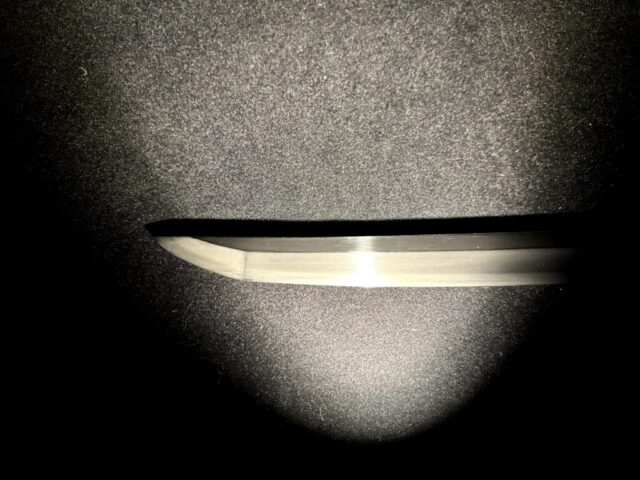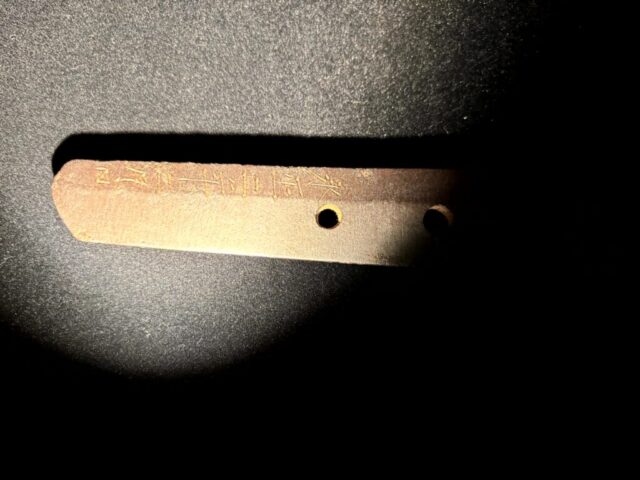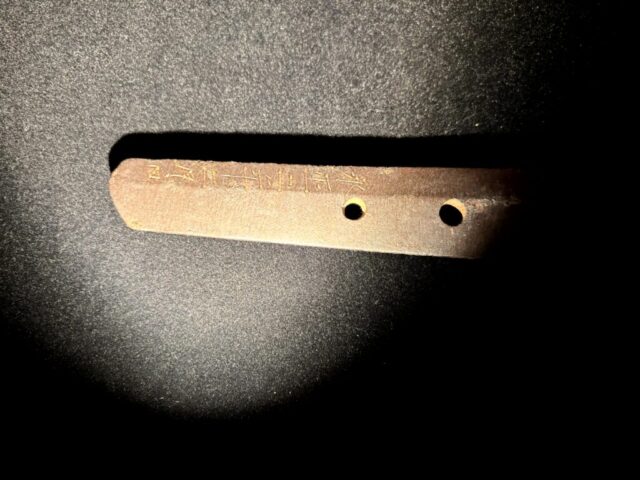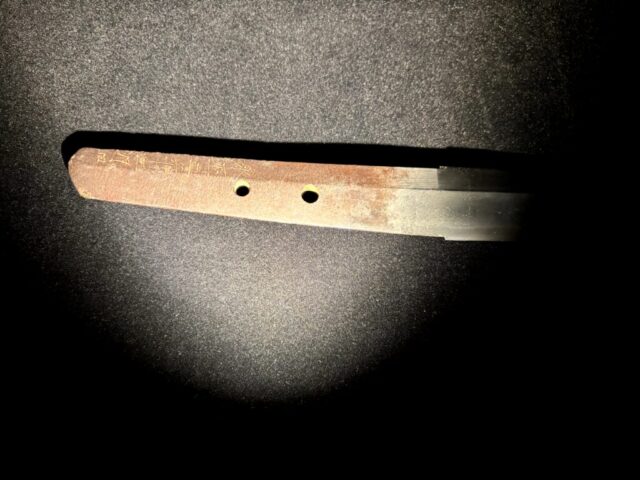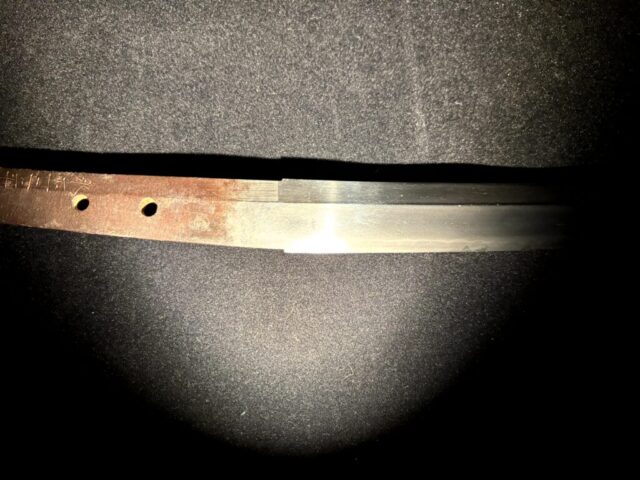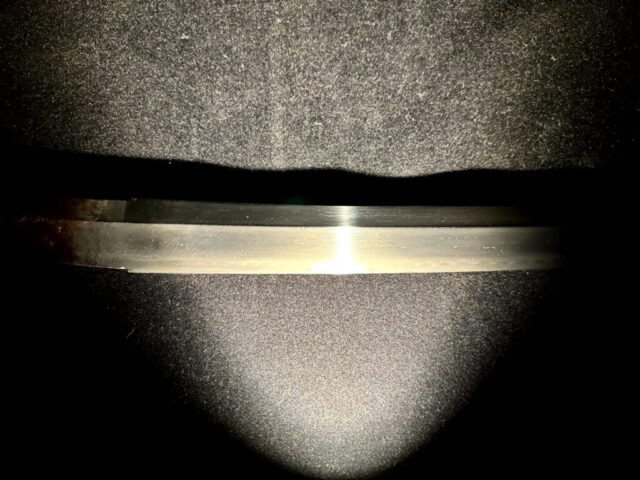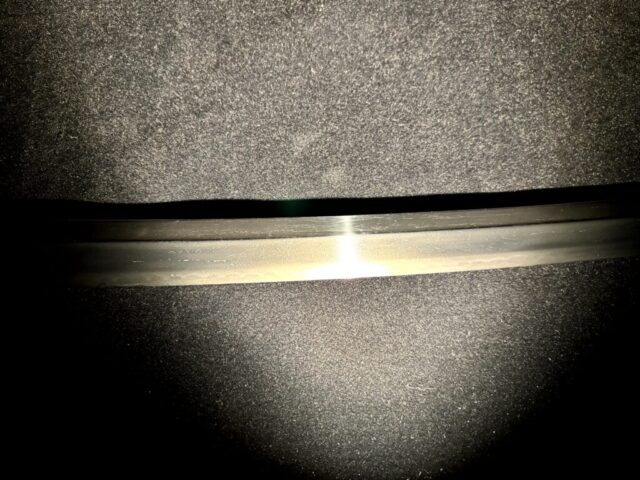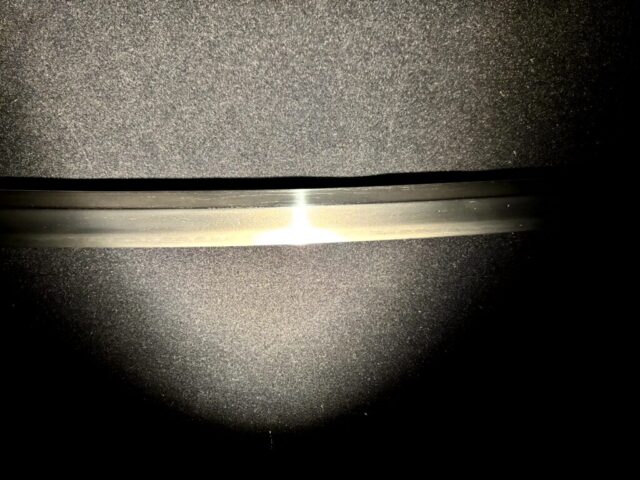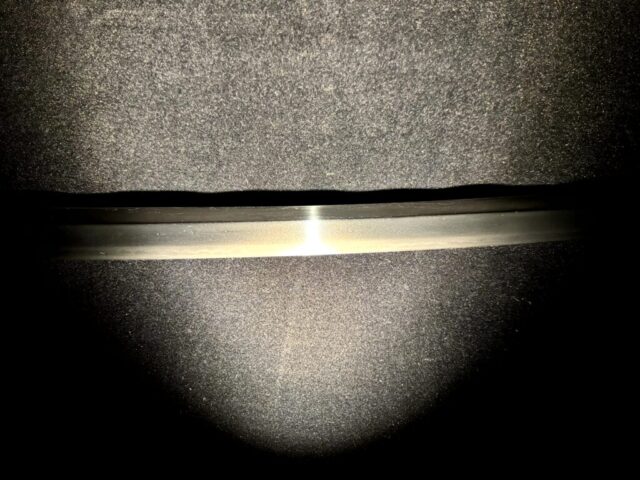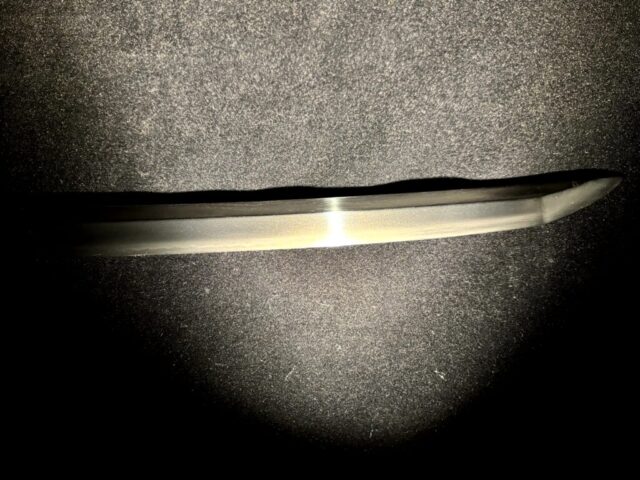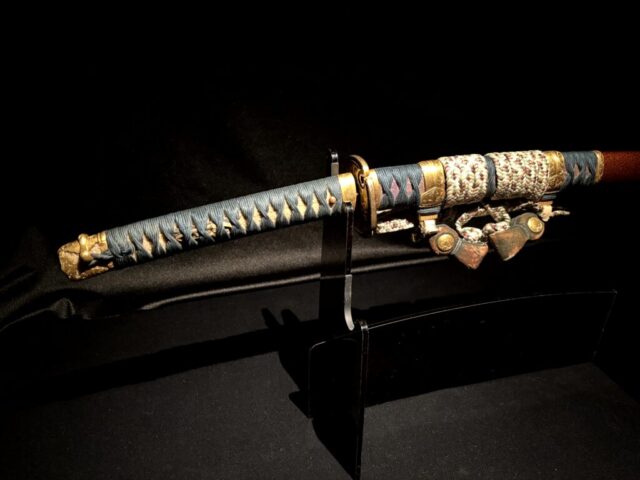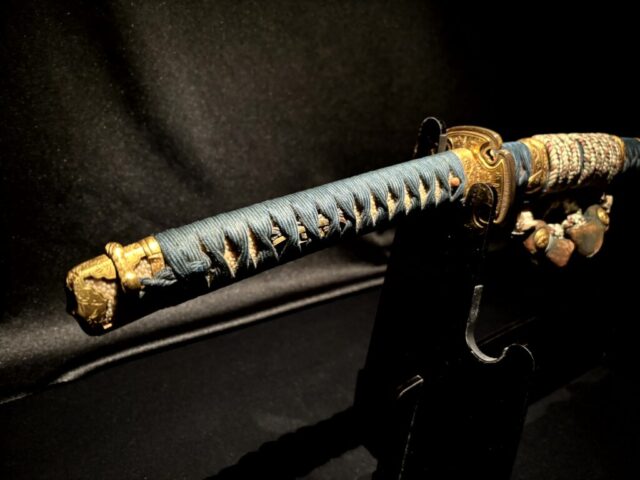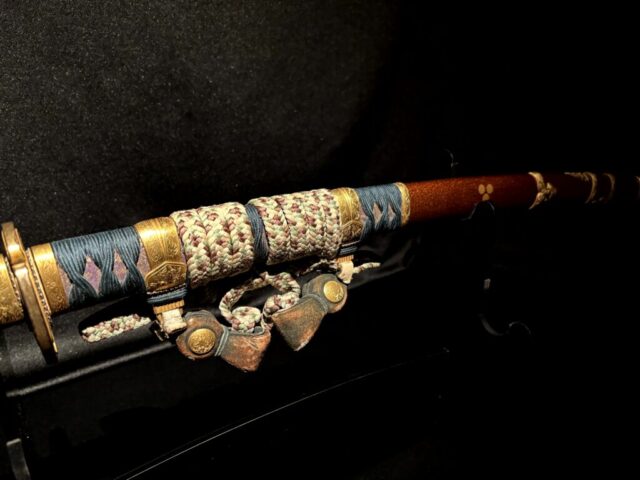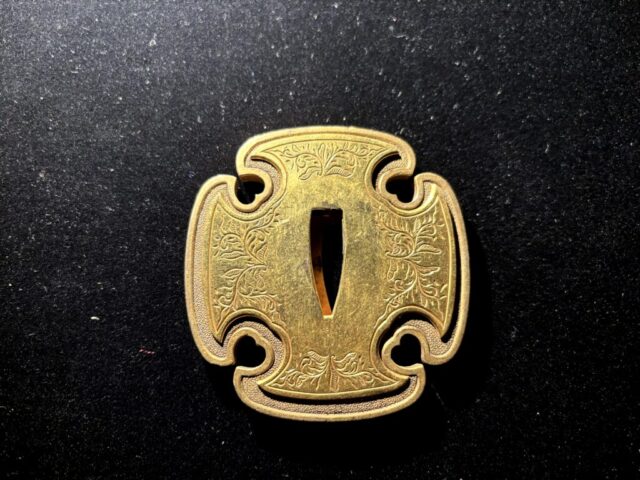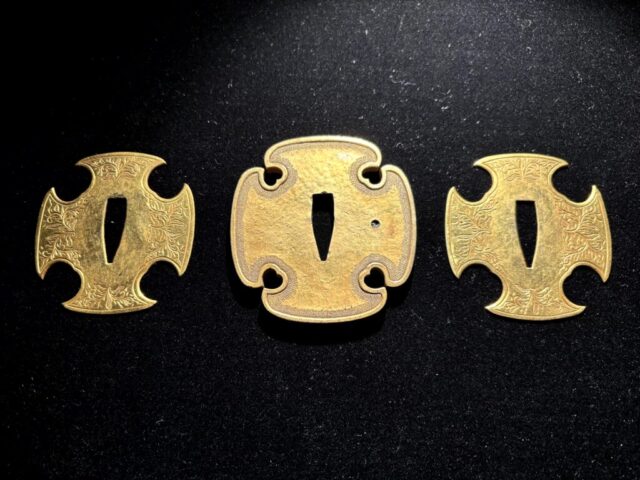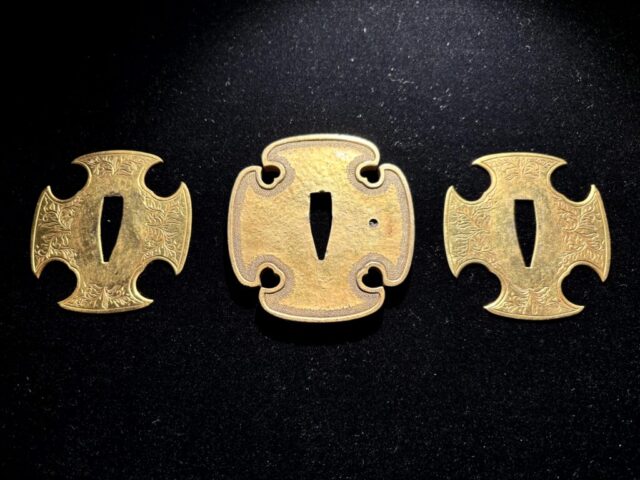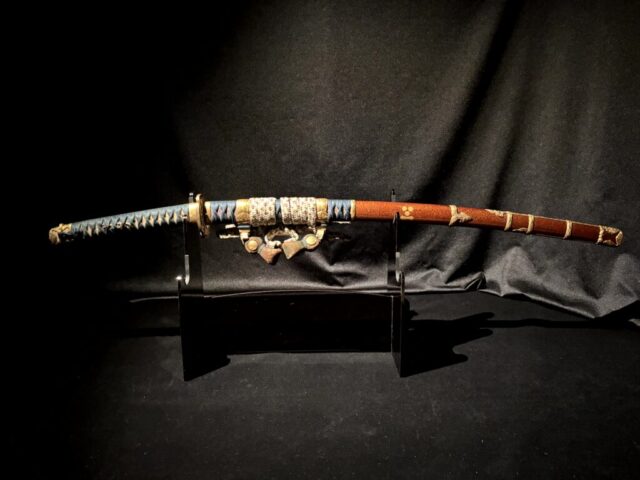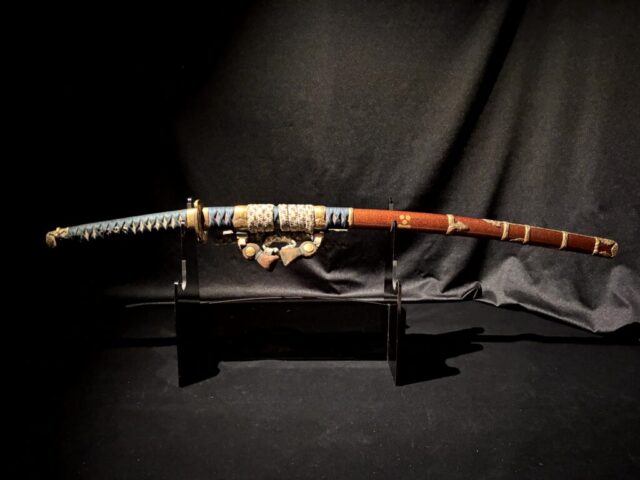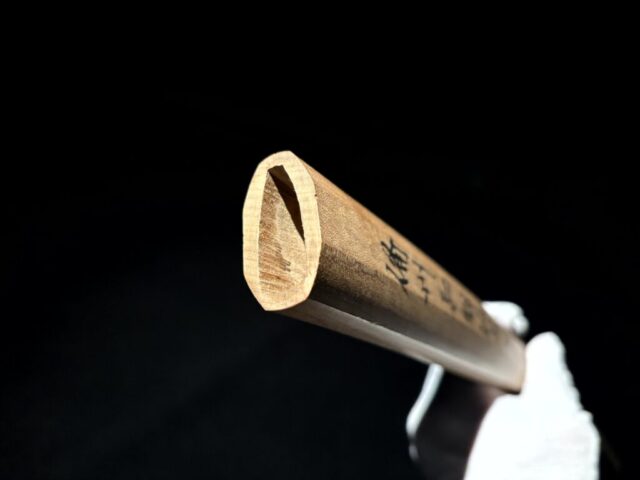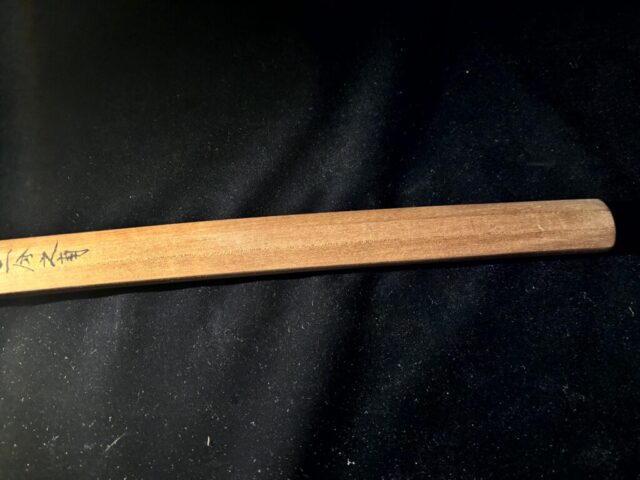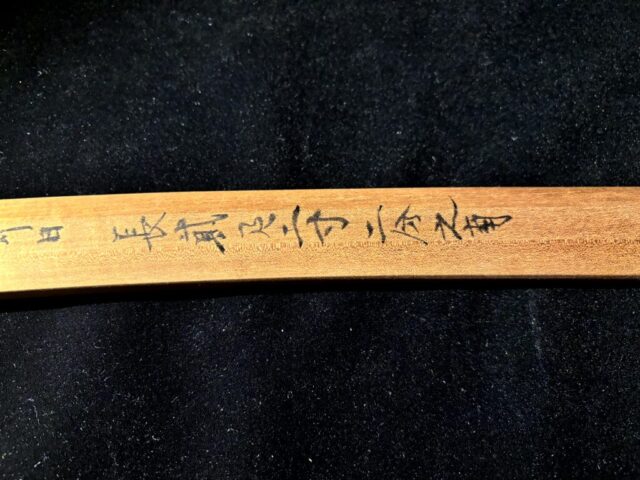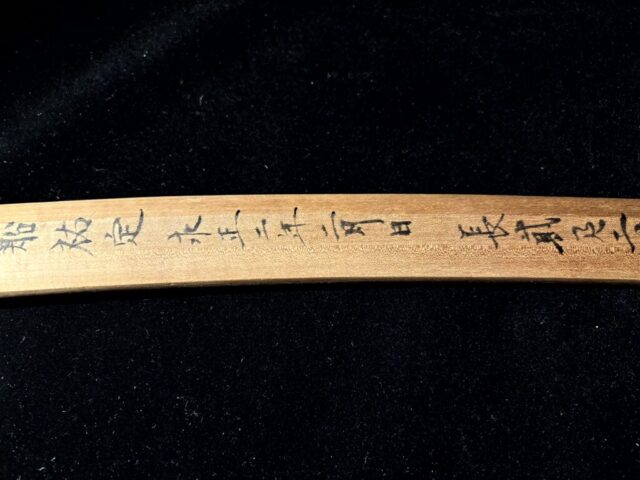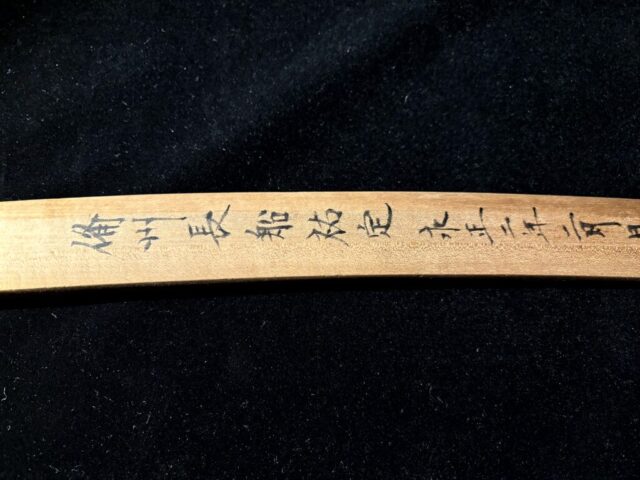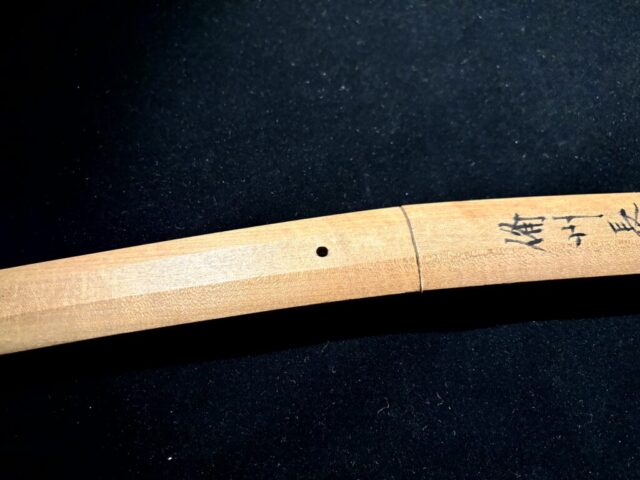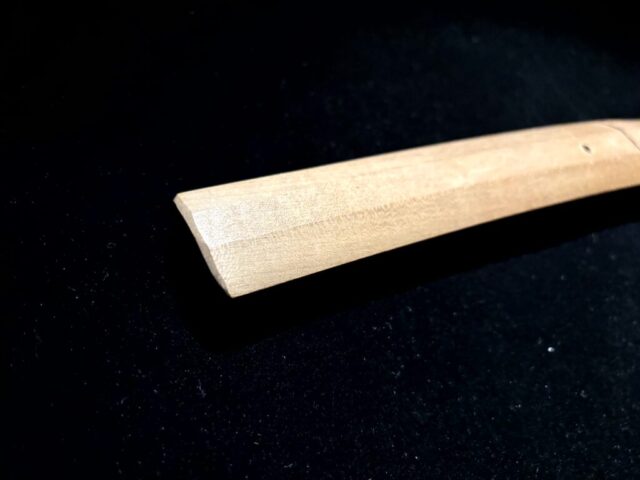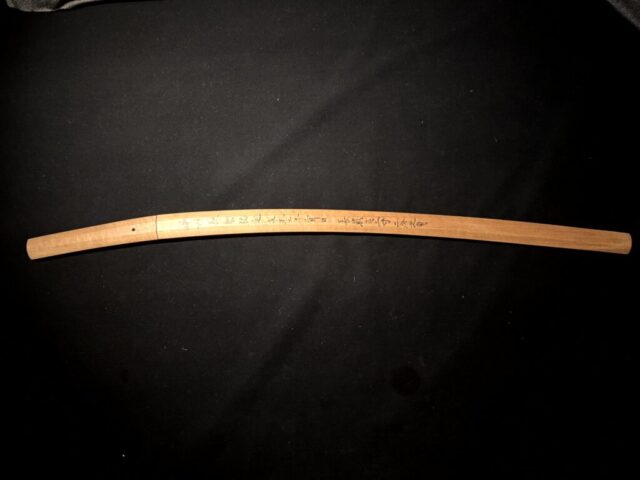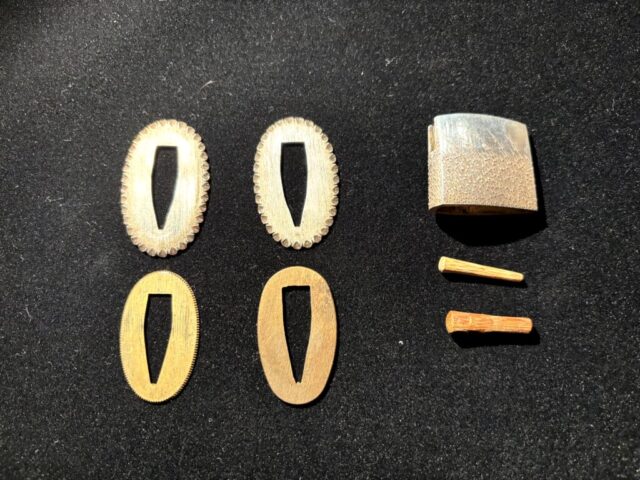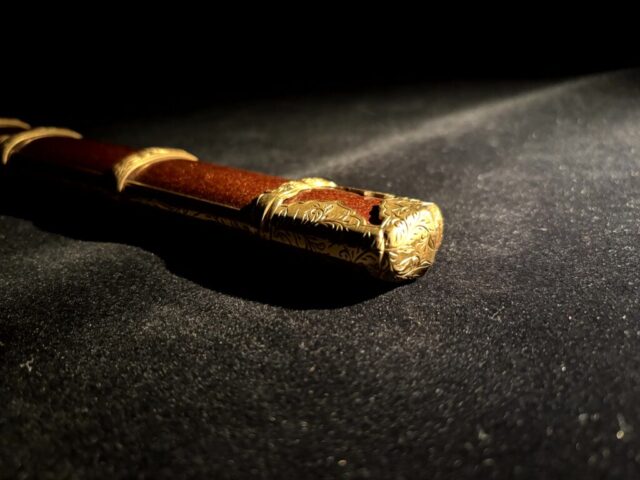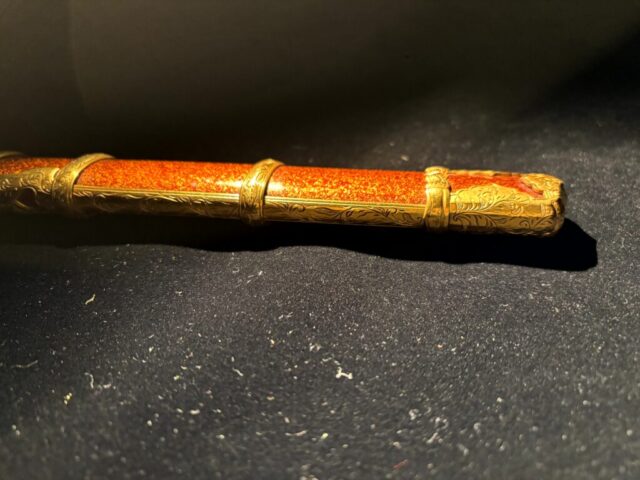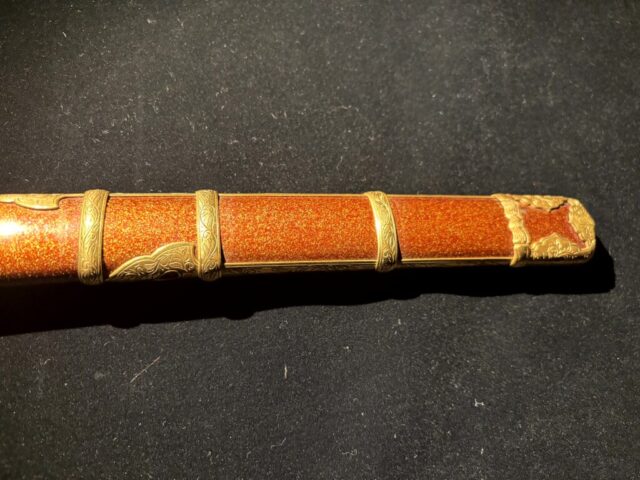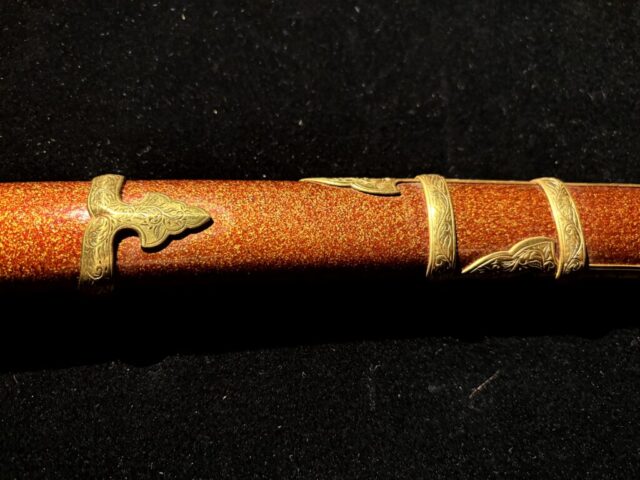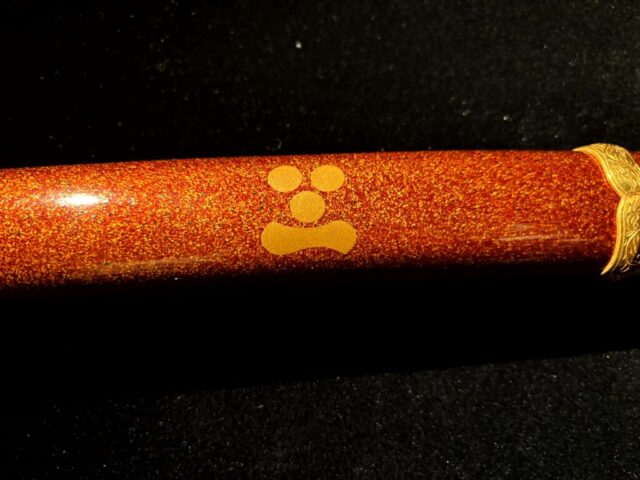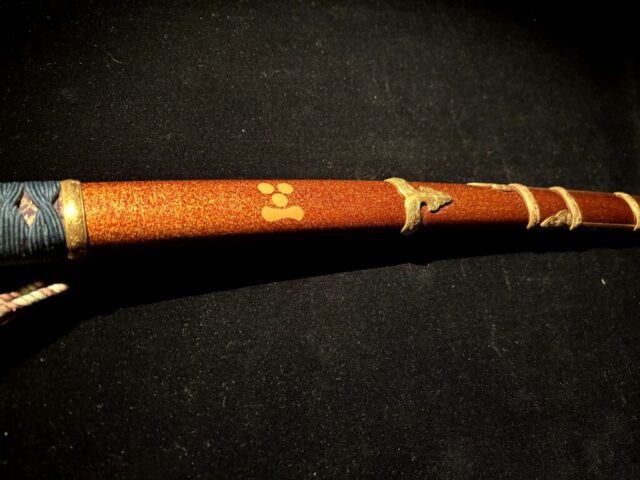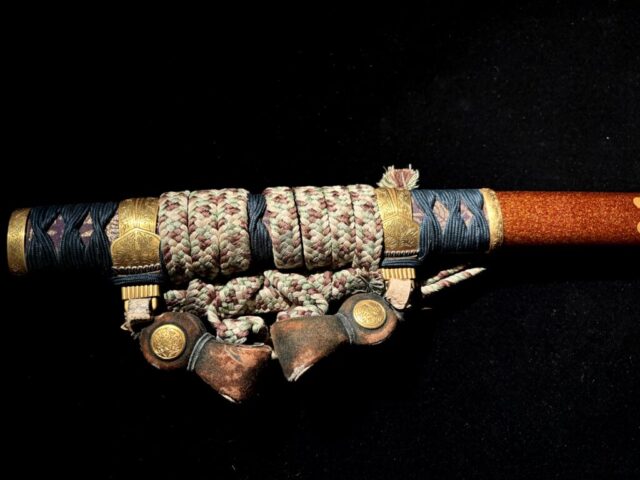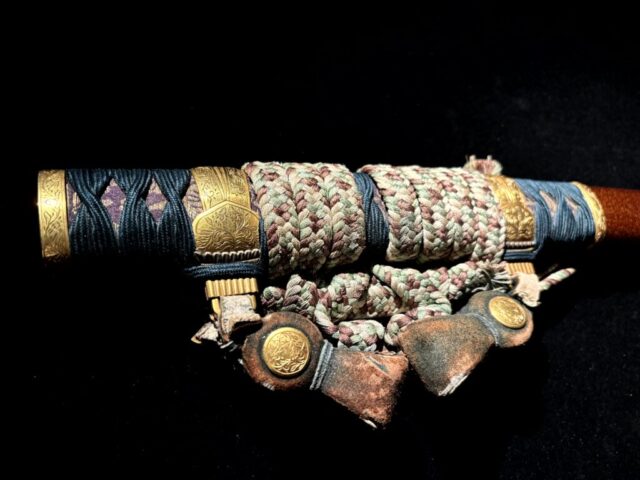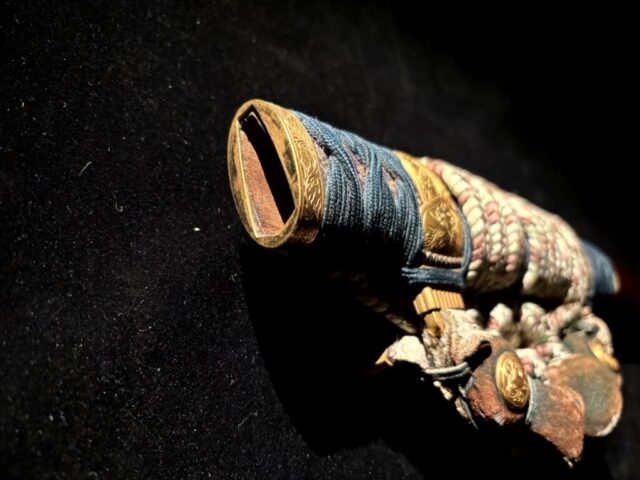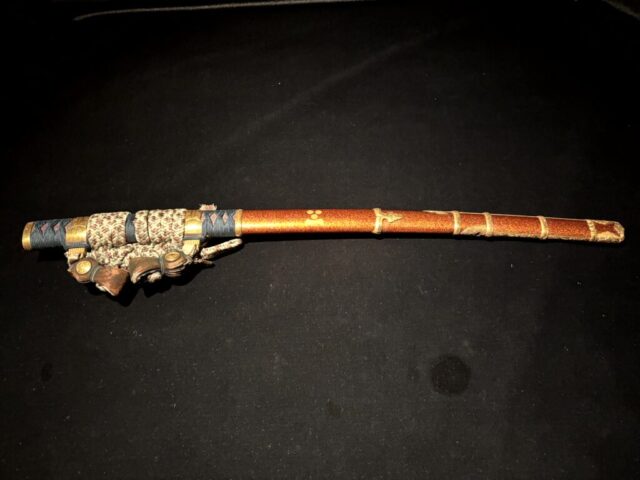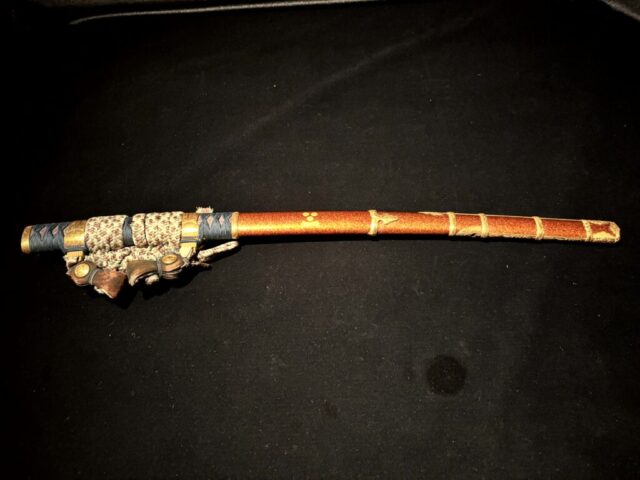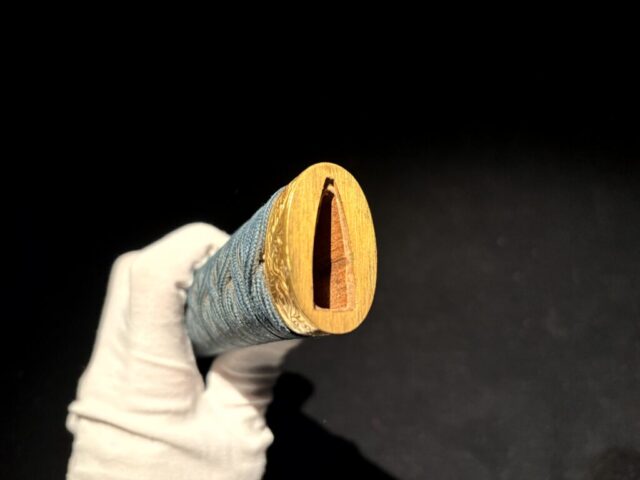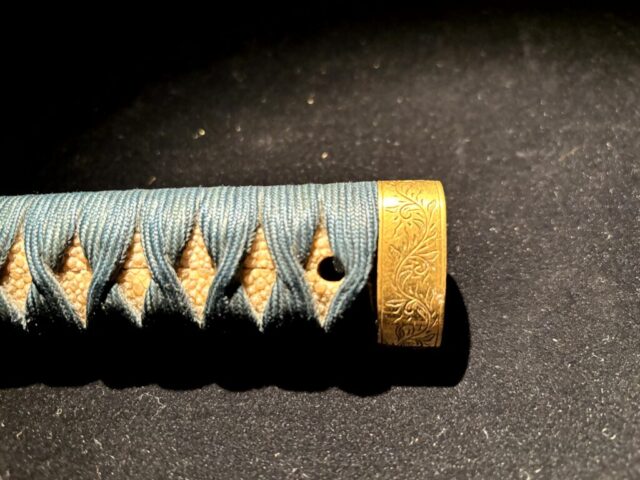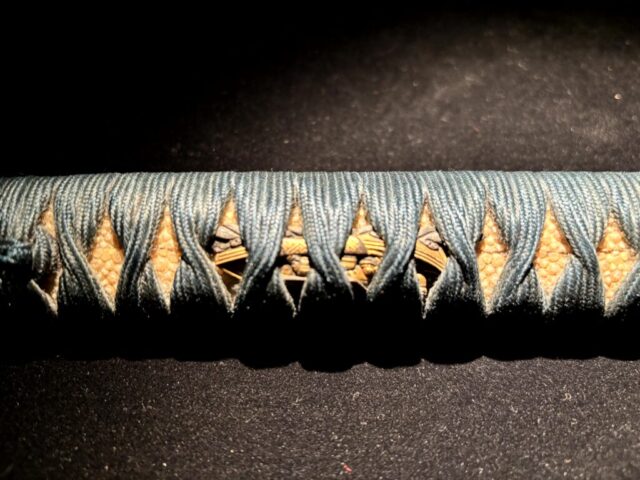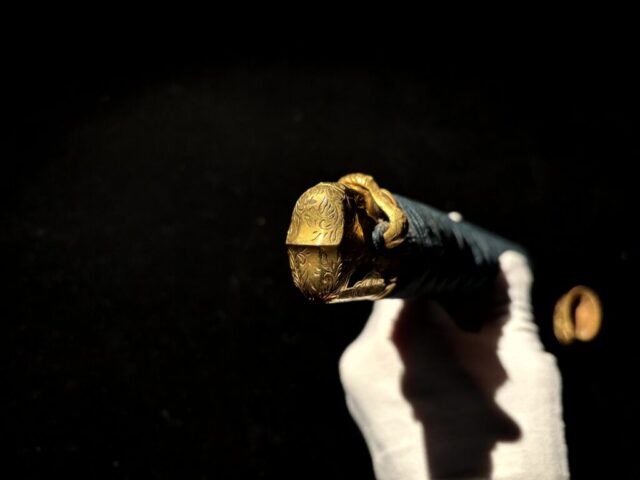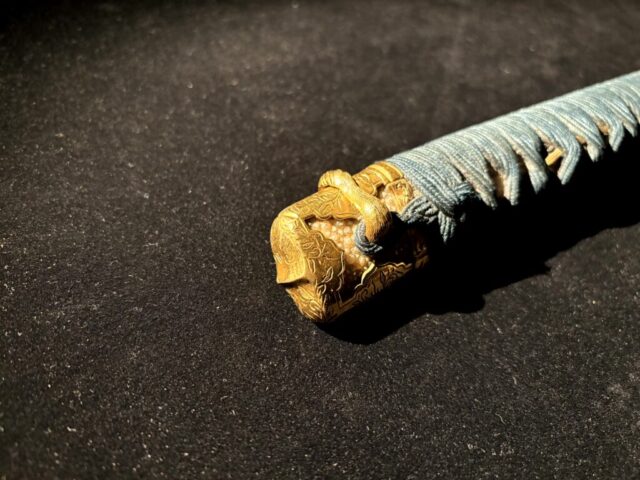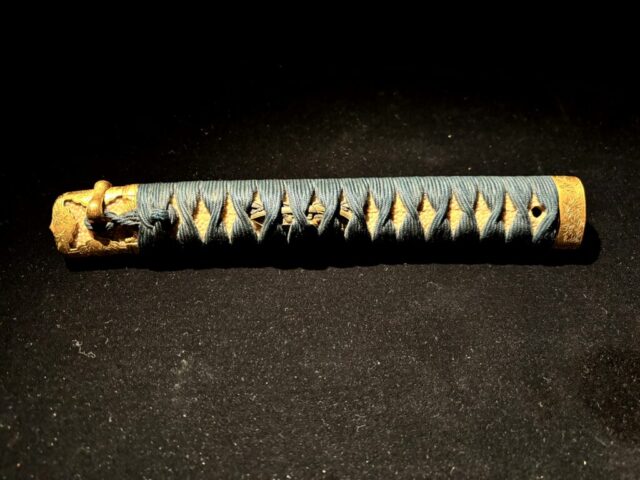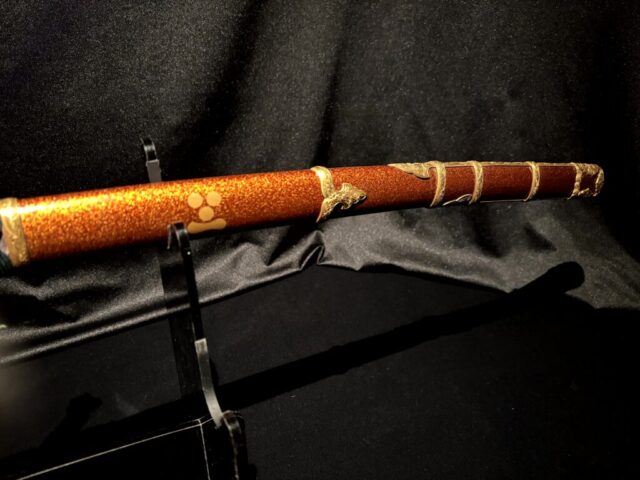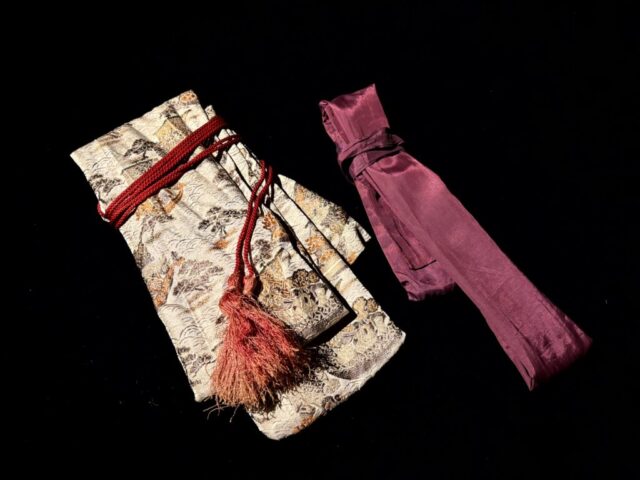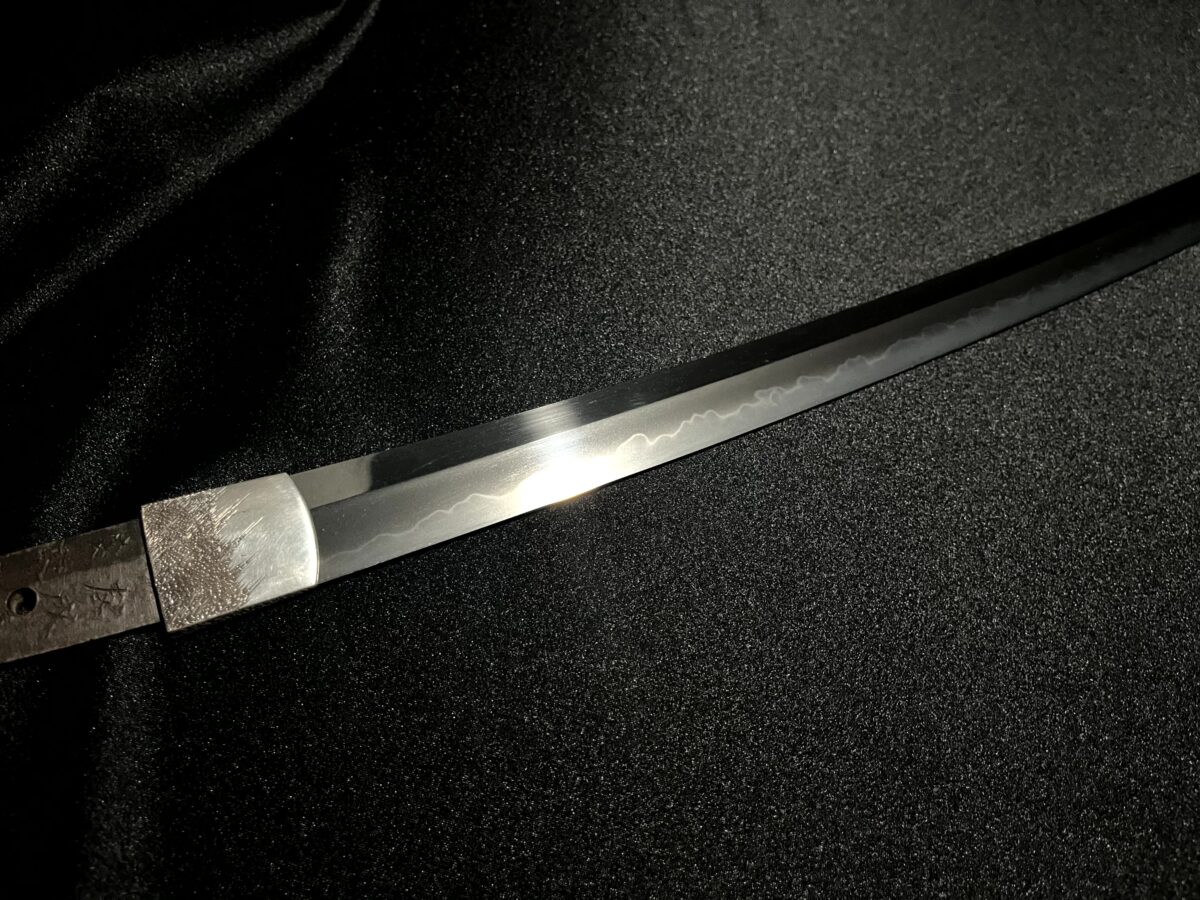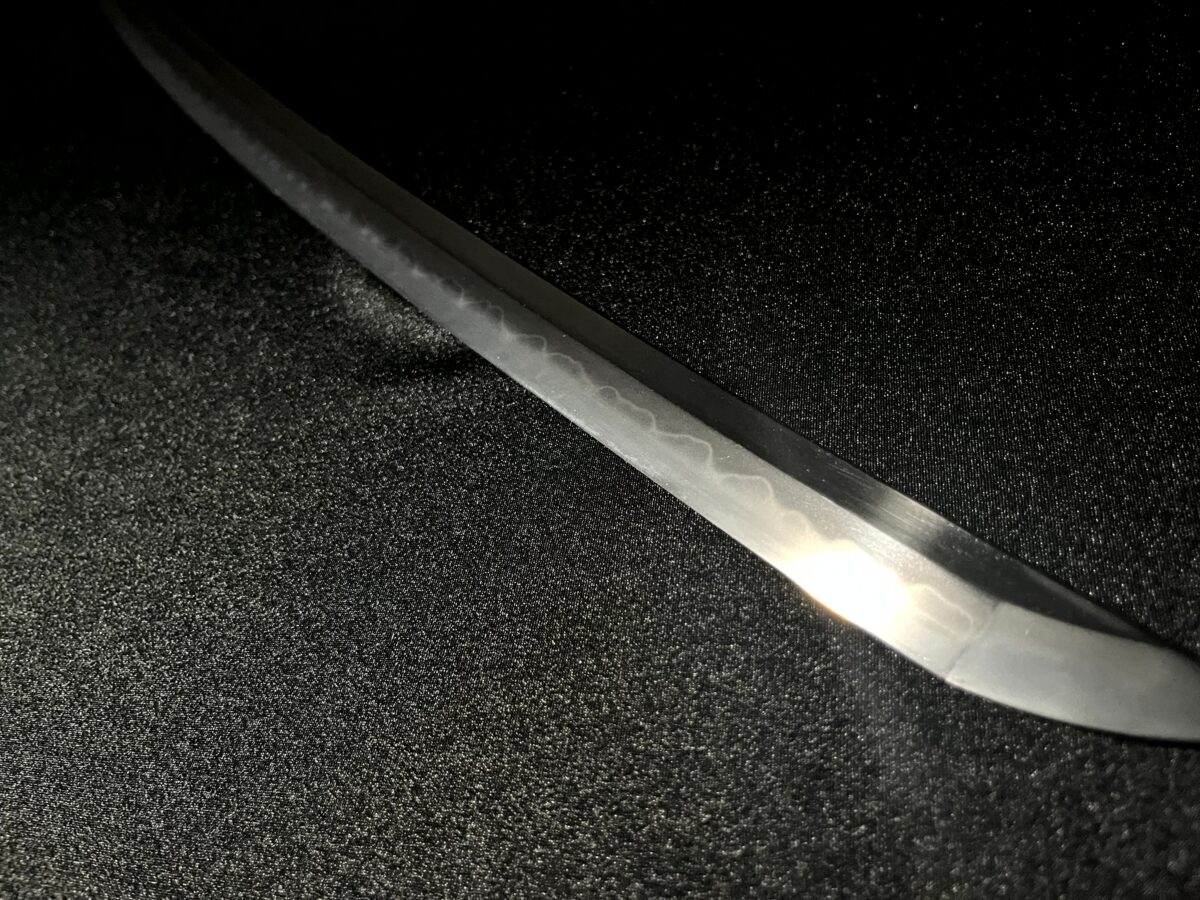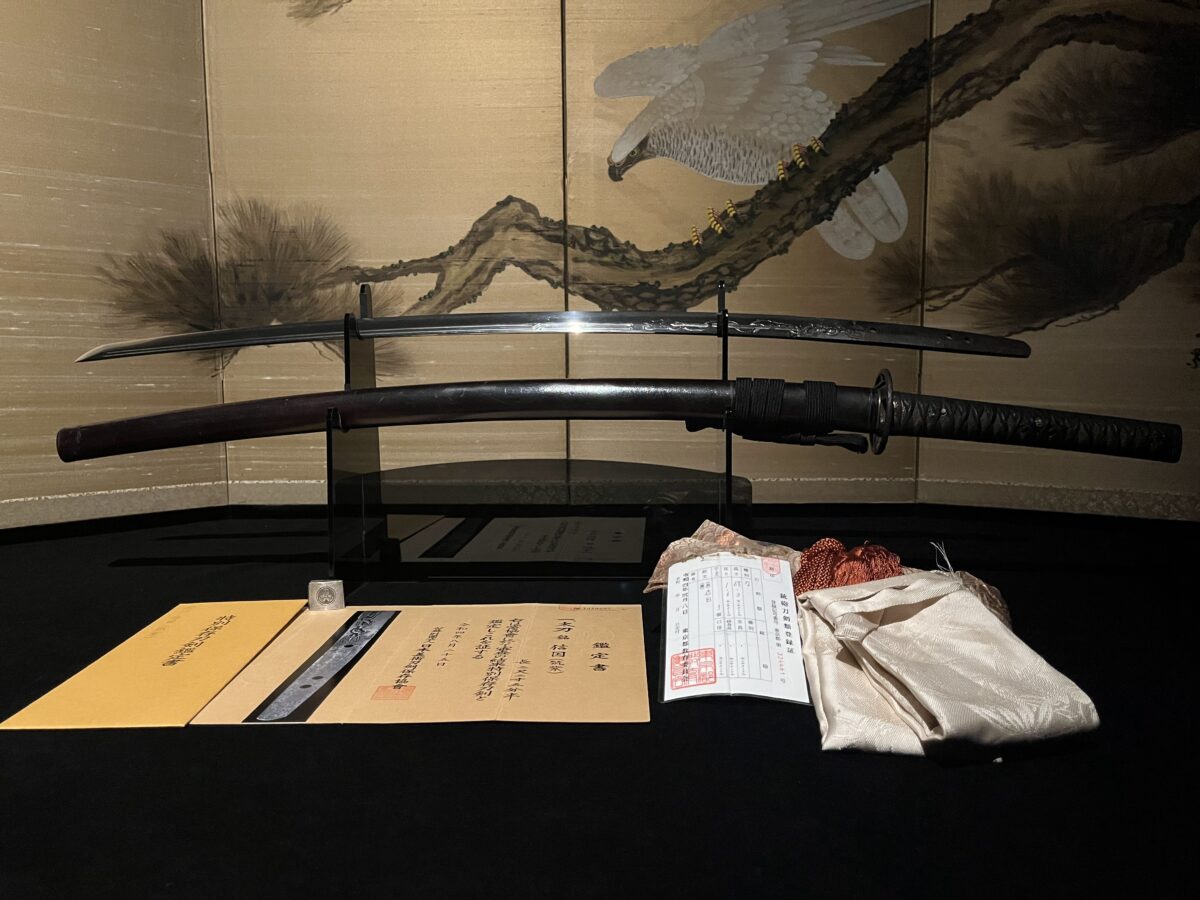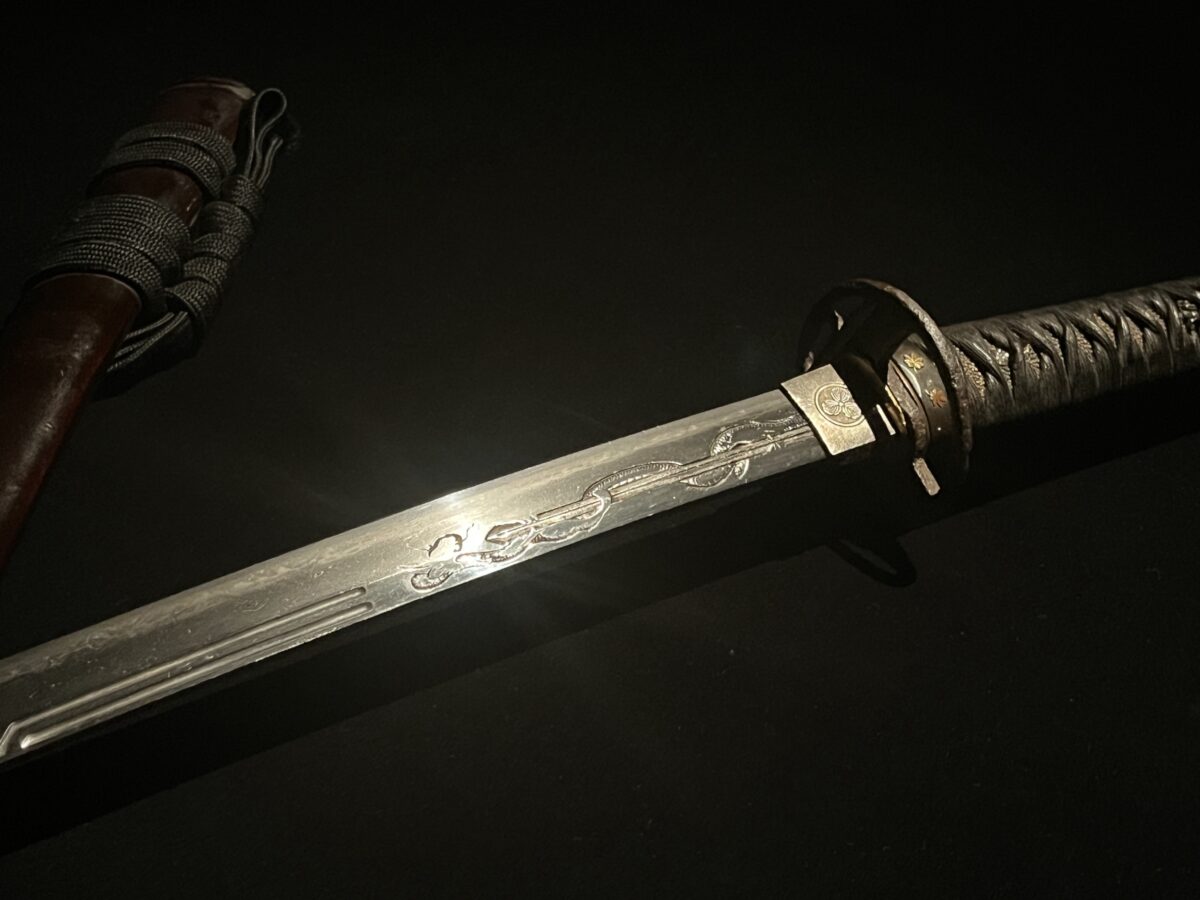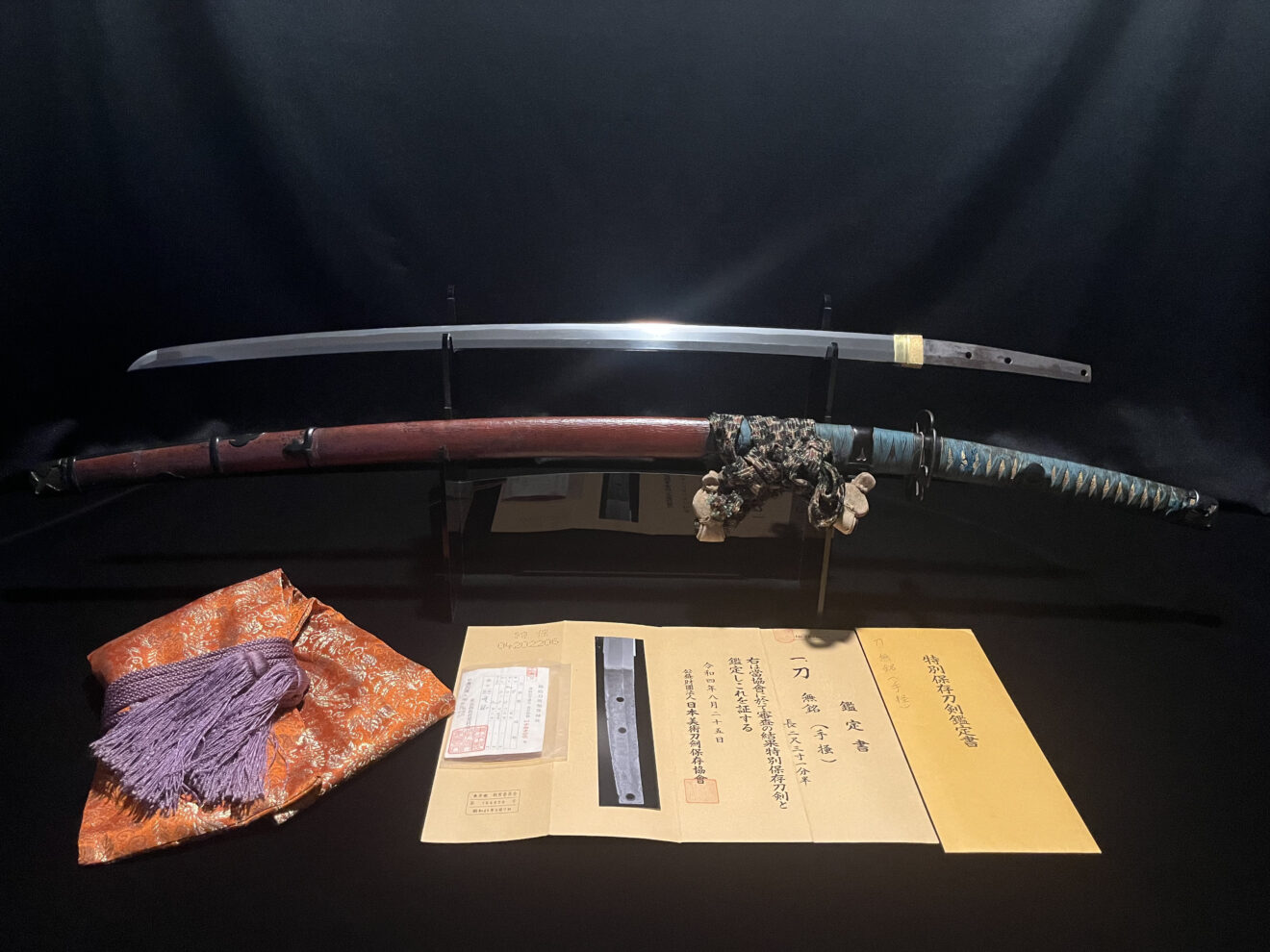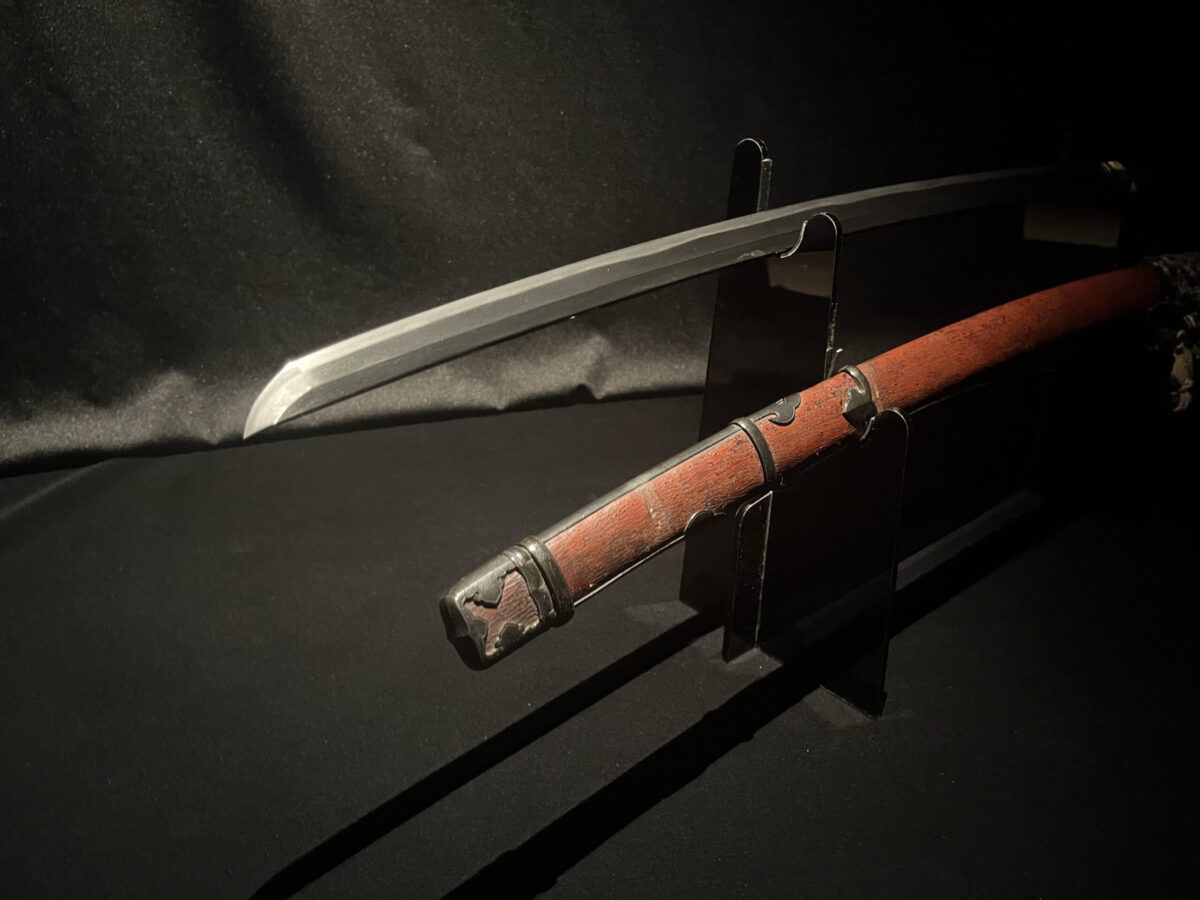Bishu Osafune Sukesada(備州長舩祐定) – Authentic Katana(1505) – Scabbard Inscribed by Sword Expert
JPY ¥ 2,567,000
Description
From the Katana Enthusiast

A master-level Katana by one of Japan’s most celebrated swordsmiths, complete with a rare dated signature.
This exceptional piece was forged in 1505 by Bishu Osafune Sukesada, a master swordsmith whose works are ranked at the highest level of classical Japanese blades. It bears both a clearly inscribed signature and the exact date of its creation—features that significantly enhance its value as a historical artifact and collector’s piece.
Adding further to its appeal is a meticulously crafted Tachi-style Koshirae (mounting), along with a Sayagaki (scabbard inscription) that affirms its provenance. Altogether, a complete package of artistry, legacy, and authenticity.
Katana Certificate of Authenticity and Registration
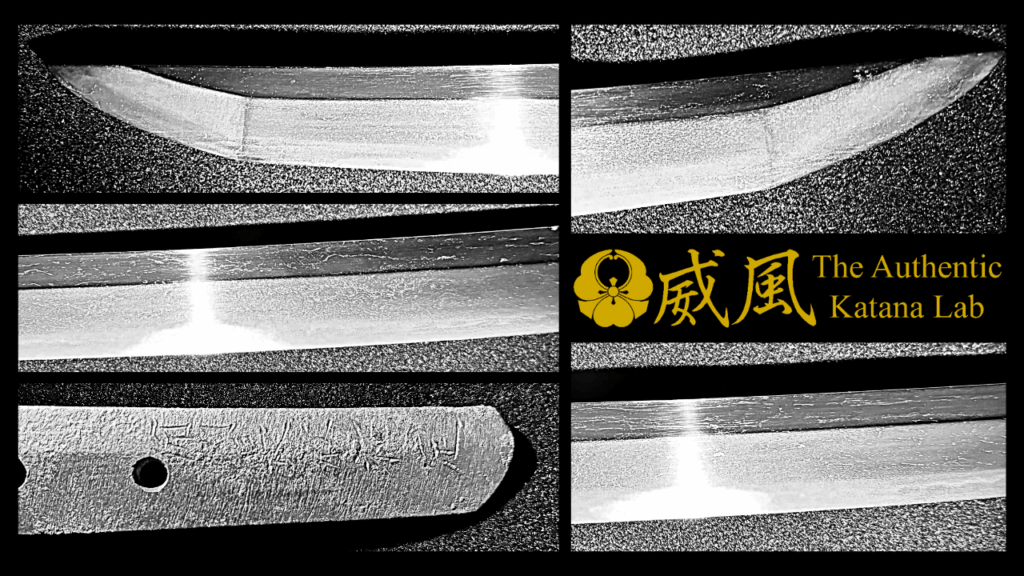
Based on a comprehensive evaluation of every detail and element of craftsmanship, we can confidently state that this Katana is not only a “Real Katana,” but also an “Authentic Katana” of exceptional historical value. For the definition of an Authentic Katana, please refer to this page.(→ What Makes A Katana Real)
Although it has not yet been submitted for NBTHK appraisal due to recent acquisition, its craftsmanship is beyond question.
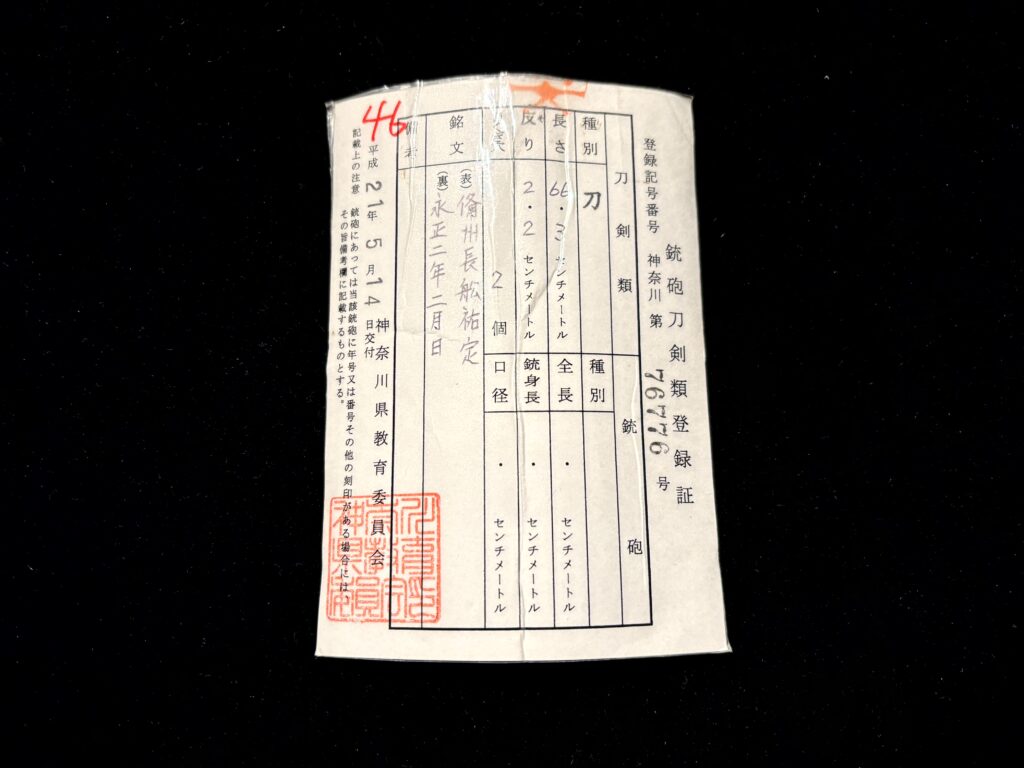
All Real Katanas are officially registered with the Board of Education of the prefecture in which they are located, and each comes with a registration certificate. This Katana also comes with its registration certificate, as shown in the attached image.
The original certificate must be returned to the Board of Education prior to export, but we will provide a copy of the certificate along with your purchase.
Each part of the Katana
1. Toshin(刀身)
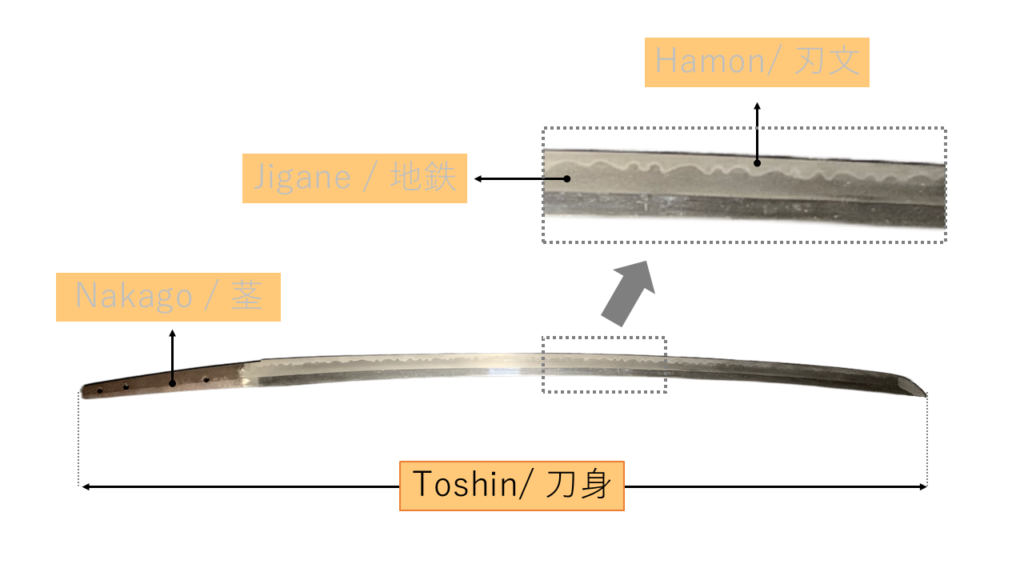
The Toshin refers to the entire blade of the Katana.
When evaluating a Katana, the blade’s length—and particularly its sori (curvature)—is a key point of appreciation.
The sori is what enables the Japanese sword to remain unbreakable and unbendable, while also allowing it to cut through objects with remarkable efficiency and minimal force.
If you’re interested in the scientific background of this, we explain the theory in detail in the following article:
Curved for a Reason: The Hidden Function of Authentic Katana’s Shape
【Toshin of This Katana】
Koshirae Full Length: 96.0cm
Overall Length : 80.9cm
Blade Length (Nagasa): 66.3cm
Width at Base (Motohaba) : 3.0cm
Thickness at Base (Motokasane) : 0.7cm
Weight : 0.6kg
Curvature (Sori): 2.2cm
2. Hamon(刃文)
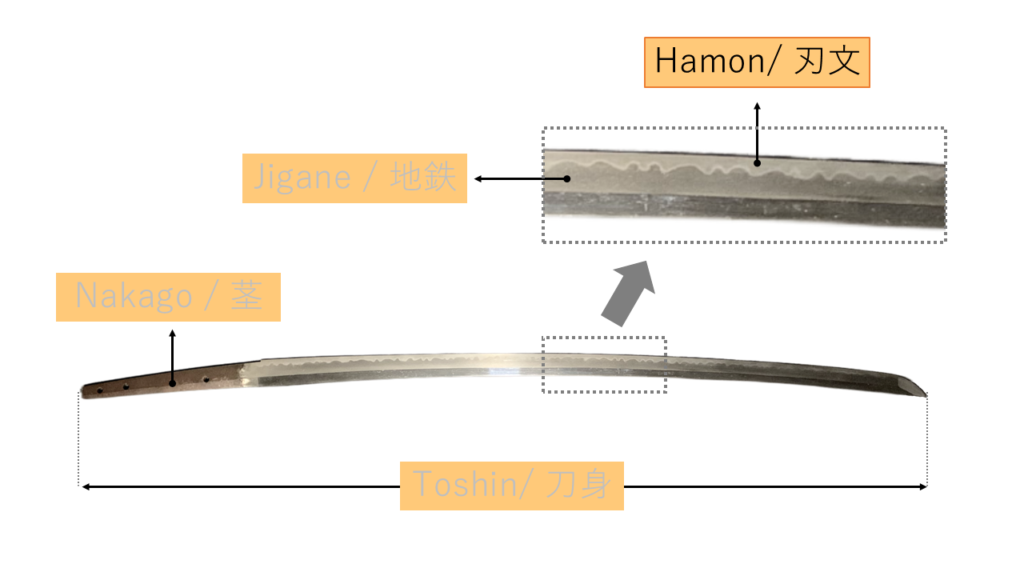
The Hamon is a white, wave-like pattern that appears along the edge of an authentic Katana blade.
There are two primary types of Hamon: the straight-line Suguha, and the more irregular, wavy Midareba.
While these can be further classified into many subtypes, the Hamon is a key element in sword appraisal, as it reflects the unique characteristics and techniques of the swordsmith.
It’s also one of the most visually enjoyable features of a Katana, making it fun to choose a blade based on the Hamon that resonates with you.
【Hamon of This katana】
3. Jigane(地鉄)
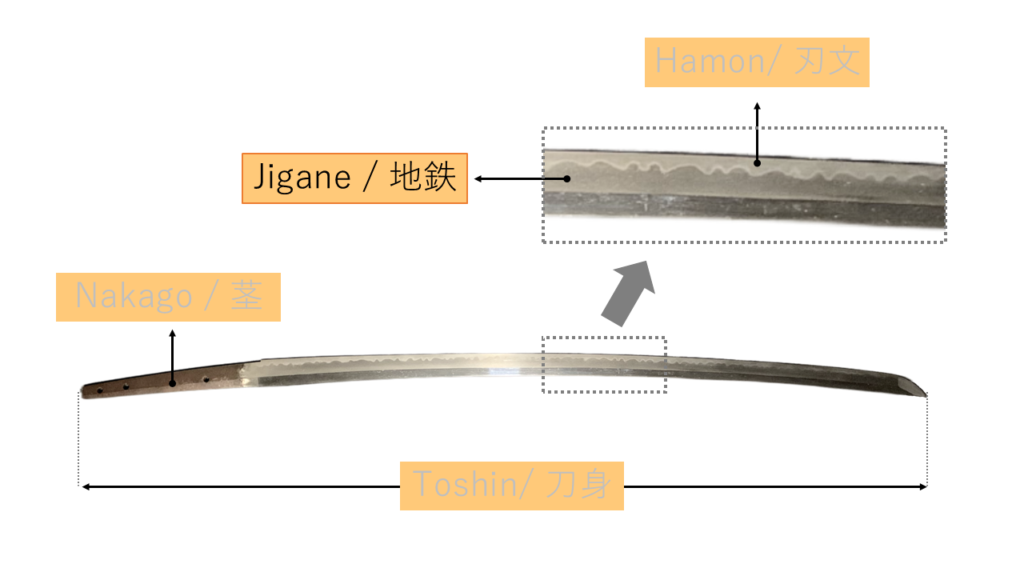
Jigane refers to the intricate surface patterns that appear on the blade of a Katana.
These patterns are created when tamahagane—steel made from iron sand, the raw material—is repeatedly folded and forged.
Each Katana reveals a unique Jigane pattern, offering a window into the artistry and technique of its maker.
【Jigane of This Katana】
4. Nakago(茎)
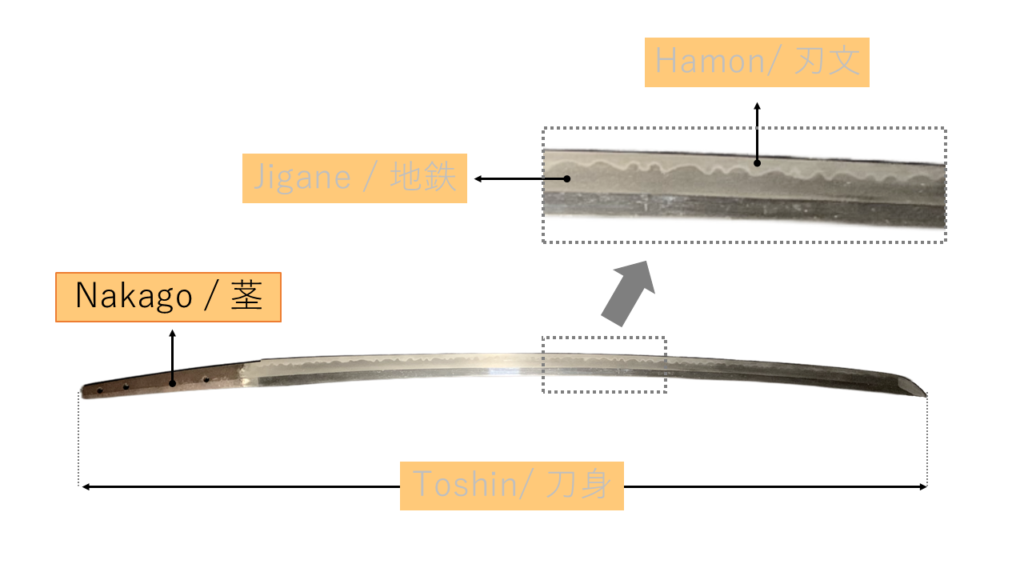
The Nakago is the tang of the Katana—the part of the blade that extends into the handle.
It often bears a mei (銘), or signature, which may include the name of the swordsmith and the date of its creation.
【Nakago of This Katana】
5. Tsuba (鍔)
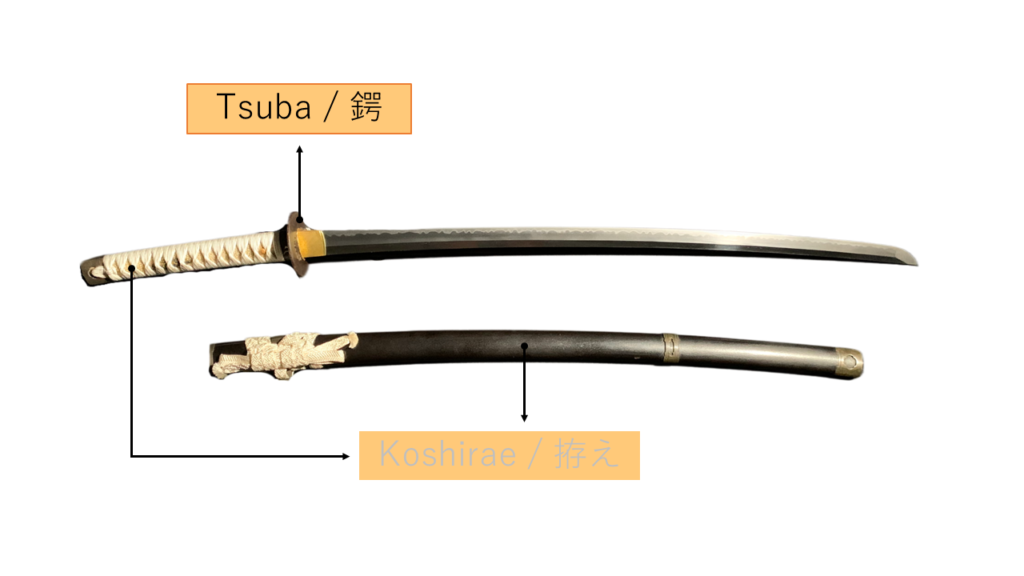
The Tsuba is a metal guard positioned between the Toshin (blade) and the handle. Its primary function is to protect the wielder’s hand from an opponent’s blade during combat.
Conversely, it also prevents the hand from slipping forward onto the blade during a strike.
In addition, the Tsuba helps to balance the Katana by adjusting its center of gravity.
There are many different styles of Tsuba, ranging from purely functional to highly decorative.
Some are so exquisitely crafted that they are recognized as valuable works of art—with certain Tsuba designated as Important Cultural Properties by the Japanese government.
【Tsuba of This Katana】
6. Koshirae(拵え)
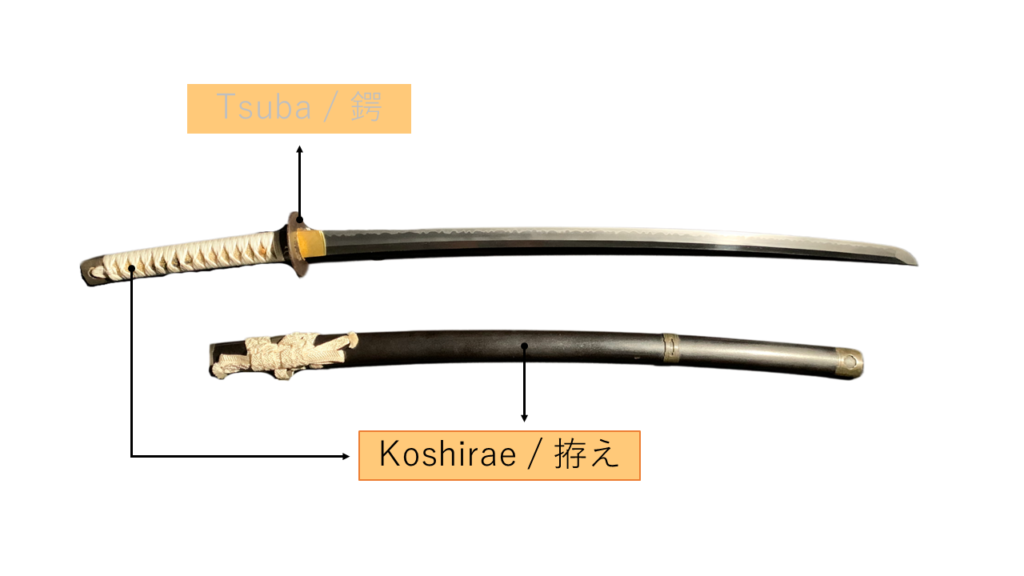
Koshirae refers to the complete exterior mountings of a Katana, including the handle (tsuka), guard (tsuba), and scabbard (saya).
There are two main styles of Koshirae: Uchigatana Koshirae (打刀拵) and Tachi Koshirae (太刀拵). Because each Katana differs in length, curvature, and proportions, a unique Koshirae is custom-made to perfectly match each blade.
The Koshirae itself is considered an important work of art.
We hope you’ll enjoy appreciating it as a complete expression of the Katana’s beauty and balance.
【Koshirae of This Katana】
About Bishu Osafune Sukesada
1. Overview
Sukesada was a swordsmith of the Osafune school in Bizen Province. Alongside Tadatsugu and Katsumitsu, he is considered one of the most prominent smiths representing the group known as Sue-Bizen (late Bizen period swordsmiths).
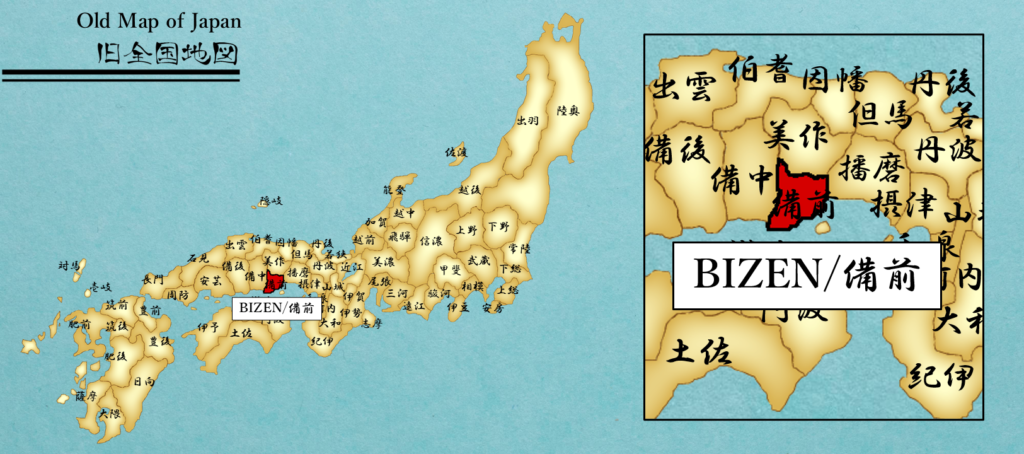
During the Muromachi period, the demand for swords surged due to increased warfare and the shogunate’s foreign trade. This era marked a time of intense sword production in Bizen.
Among the Osafune swordsmiths, the Sukesada lineage gained particular renown and continued to thrive for generations.
2. Genealogy of Bishu Osafune Sukesada
It is said that more than 60 swordsmiths used the name “Sukesada”, but among them, the most renowned was the one whose common name was “Yosōzaemon”. He was highly skilled, and his works are classified as Saijō-saku (the highest grade among late Koto period swords).
Because he was active during the Eishō era (1504–1521), he is also referred to as “Eishō Sukesada.”
3. Characteristics of This Katana
This Katana bears a clearly inscribed signature, identifying the swordsmith as Bishu Osafune Sukesada, with the date of manufacture recorded as February 1505. This date falls squarely within the prime period of Sukesada, who is recognized as one of the finest smiths of the Sue-Kotō era. It can truly be said that this sword was crafted during the golden age of Osafune Sukesada.
The koshirae (mounting) of this piece is an elegant Tachi-style koshirae, a type of mount traditionally used for tachi swords. Tachi were worn suspended edge-down from the waist, a style suited to mounted warriors, and this mounting style was especially prevalent from the mid-Heian to early Muromachi periods.
While the overall harmony and the colors of the tsuka (handle) and saya (scabbard) are excellent, it is the meticulous attention to detail that truly stands out.
The tsuba (guard) gleams with golden brilliance, captivating all who behold it. Beyond its visual beauty, it also has a distinct weight in the hand, conveying a sense of solidity and presence.
Matching golden fittings extend from the tsuka to the saya, enhancing the sword with luxurious decoration. The result is a flawless and superbly crafted piece.
Additionally, the accompanying shirasaya (plain wooden scabbard for storage) features an inscription (sayagaki) which reads:
Bishū Osafune Sukesada
February 1505
Blade length: 66.3 cm
From the Gokaden Lineage: Bizen-den Roots
Many Japanese swords trace their roots back to one or more of the five major traditional schools of swordsmithing, known as the Gokaden(五箇伝).

These five traditions—Yamato, Yamashiro, Bizen, Soshu, and Mino—each developed in different historical provinces and are known for their distinct styles and characteristics.
This sword is rooted in the Bizen-den(備前伝) tradition.
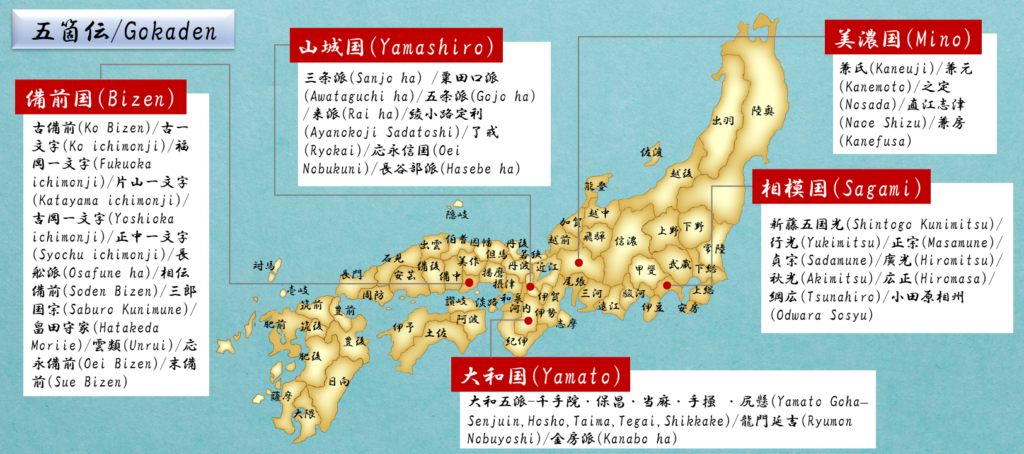
Bizen-den flourished in Bizen Province (present-day eastern Okayama Prefecture) from the late Heian period through the Muromachi period.
During the Kamakura and Nanbokucho periods in particular, Bizen swordsmiths dominated the field, producing blades that combined both exceptional quantity and outstanding quality, making Bizen a uniquely influential center of sword-making.
The region was blessed with high-quality iron sand and ideal water sources, creating perfect conditions for forging and tempering. As a result, countless famous swords were born in this area.
Bizen swords are known for their elegant curvature, refined balance, and especially their beautiful and often elaborate Hamon. They were widely appreciated by both samurai and commoners, blending aesthetic appeal with practical function.
Collectors value Bizen-den swords for their graceful beauty, reliable craftsmanship, and significant historical role—a combination that makes them enduring favorites across centuries.
Buyer’s Guife
Authentic Katanas are limited in number, and we hope each one finds its way to a collector who truly appreciates its value.
Before making a purchase, please take a moment to review our [Buyer’s Guide] for important information.
Shipping Information
1.Time Required for Delivery
This is a truly domestic Japanese sword that has never left Japan.
In order to export it overseas, we must obtain an official export permit from the Agency for Cultural Affairs of Japan.
It typically takes around 25 business days from the time of payment until the export process begins.

After shipment, delivery usually takes 7 to 20 days, depending on the destination country.
2.Shipping Charges
Shipping is free of charge.
We offer international shipping to most countries, with the exception of China and Russia.
3.Regarding Imports
Please check with your local customs office regarding regulations on importing Japanese swords.
We are not responsible for delays, rejections, or seizures by customs in the destination country.
For more details, please refer to our dedicated [Shipping Information] page.
Payment
To ensure a secure and respectful purchasing process, we currently accept bank transfers only.
As each katana is a legally registered cultural asset—not a weapon—we prioritize direct communication with buyers. This allows us to confirm intent, provide details, and build trust before completing any transaction.
Our approach reflects our deep respect for the historical and artistic value of Japanese swords and our commitment to responsible international sales.
For more details, please refer to our dedicated [Payment] page.
Frequently Asked Questions (FAQ)
If you have further questions, feel free to contact us directly.
Do you ship internationally?
Yes, we ship authentic Japanese swords worldwide. Even if we do not have a delivery record to your country, we will do our best to arrange secure delivery.
Currently we do not ship to China or Russia.
Is shipping really free?
Yes. All listed prices include complimentary international shipping. No additional delivery fees will be charged.
How long will it take to receive my sword?
Because we must obtain export approval from Japan’s Agency for Cultural Affairs, it takes about 25 business days to begin shipping. Including transit time, please allow 1–2 months for delivery.
For more details, please refer to our Shipping Information.
Are the swords already exported items?
No. Every sword we offer has remained in Japan since its creation and is being exported for the first time.
Are the swords legally exported?
Absolutely. We follow all Japanese regulations and obtain official export permits before shipment.
For more details, please refer to our Legal Status of Japanese Swords.
Do I have to pay customs duties or taxes?
Import duties or taxes may be levied by your country’s customs authority. Buyers are responsible for any such charges. For example, in France, approximately 20% import tax may apply. We recommend checking with your local customs office in advance.
Can I return a sword after purchase?
Returns and exchanges will not be accepted unless agreed upon between the Company and the User.
How do you select the swords you sell?
Our team consists of Katana enthusiasts with backgrounds in metallurgy and history.
We participate multiple times each month in exclusive local auctions in Japan, open only to certified Katana professionals. From these auctions, we carefully select and acquire truly valuable Katanas. Our collection features authentic pieces that are rarely found in ordinary shops.
How can I trust that the sword is real?
We conduct thorough, detailed analyses of every aspect of each Katana. While registration papers and certificates issued by various institutions can serve as one reference point, they do not necessarily guarantee authenticity.
Our stance on what we consider to be “Real” is explained in the article below — we invite you to take a look.
Are these swords actually sharp and functional?
Yes. Our swords are authentic Japanese katana forged by traditional methods and possess a level of sharpness that has been revered for centuries. They are not decorative replicas—they are real blades capable of cutting. Please handle with the utmost care to avoid injury or damage.
I’m looking for something specific. Can I request it?
Certainly. Please contact us with your requirements—design, smith, school, era, condition—and we will be happy to assist.

